#natural conclusion to making her symbolically dead
Text
what if we were two mentally ill kids in a society that has no words or tolerance for that. what if we killed someone and unavoidably our identities and relationship were built around that trauma. what if we spent the rest of our lives trying to grapple with what we did to each other, still without words for it. and what if we were both girls/boys/it’s complicated ashkdjhdgjhg
Words: 28735, Chapters: 8/8, Language: English
Fandoms: Doctor Who (2005), Doctor Who & Related Fandoms
Rating: Teen And Up Audiences
Warnings: No Archive Warnings Apply
Characters: Twelfth Doctor, Missy (Doctor Who), Theta Sigma, Koschei
Relationships: Twelfth Doctor & Missy, Theta Sigma & Koschei, Twelfth Doctor/Missy, Theta Sigma/Koschei
Additional Tags: The Vault (Doctor Who), Doctor Who: Academy Era, torvic - Freeform, Trauma, Dissociation, i think. or something like it, wibbly wobbly memories, Self-Harm, Hurt/Comfort, Bathing/Washing, Vomiting, only in the last chapter, Non-Linear Narrative, Flashbacks
alternatively, what if youre like 10 and you almost get drowned by a bully and get that memory warped so that instead of the victim you become the murderer. what if you did that for your best friend. i mean what if your best friend did that to you. did you die?
theres love, somewhere in your body. theres death, somewhere in your body. you are remade so many times by through because of love. you die so many times by through because of love. are you dead yet? were you ever alive?
you were remade before you were made. you are a person inside out. you are a body without a soul. your friend did this to you for what you did for them. have you decomposed yet? why have you not decomposed yet?
#the koschei is dead saga#i like the ending#natural conclusion to making her symbolically dead#im not killing her theres no love in that. besides shes already dead. i did something better#i will not finish the thasmissy fic before the arbitrary deadline i set for the 30th but thats okay bc i did finish this one#it's silly how much i devalued this fic in my head once i got going on the thasmissy fic#as if i didnt write them in conversation with each other#as if this isnt the longest fic ive published until i finish the thasmissy one#it's not my best i dont think im particularly made for longform fiction#but im still very happy of what i managed to say#about thoschei and what torvic's murder did to them#i think the actual story in this is chapter 1-6-8#or maybe even just 1-8#but i also think the space between them is important. like the more space between 1 and 8 the better#i just maybe could have used that space/time more effectively. put more punches in them?#i feel like now they maybe meander a bit although there are still moments in them that i use in ch1 & 8#like most chapters Are i think in some way building to chapter 8#but also i started out writing this as just vignettes of Stuff I Wanted To See#and i in the end didnt quite manage to spread out the loadbearing stuff evenly over the chapters#THAT BEING SAID. it was a good learning experience probably. not sure i learnt anything much about plot bc im messing up in the same way#with thasmissy. but even so. practice makes better#and im very happy with the point i eventually manage to make with this. even if it takes me a couple of self-indulgent chapters in themiddle#anyway#im gonna log off for a bit#feel free to send me stuff you want me to see if i miss it
43 notes
·
View notes
Text
Neo's Hecate = The Triple Goddess
Trivia is the Roman name of Hecate, Goddess of witchcraft, crossroads and ghosts. Neopolitan is Roman's Hecate, so her birth name is Trivia. Is that really all there is?

Obviously not. Or at least, Neo's allusion to Hecate can be read in multiple ways. Sure, it might have been an unplanned reference, but by this point (either willingly or not) Neopolitan has grown into Hecate's role. So, let's analyze ice-cream's girl allusion to better understand her story, with a focus on volume 9.
WHO IS HECATE?
Hecate is a Greek Goddes, who is later adopted by the Romans with the name of Trivia. Her origin is probably more ancient than Greek culture, though. In short, she is a foreign deity, who gets integrated into Greek religion. Similarly, Neopolitan is an unplanned character shoved into the narrative. However, she finds her place in the story and grows into herself.
Here are some of Hecate's most famous attributes.
Hecate is the Goddess of crossroads and magic. In particular, she is the master of darkness and the queen of ghosts to the point she is linked to nechromancy. She also rules over demons called Empusas, who are half woman and half beast (either a cow or a dog usually). They eat human blood and are linked to fire. Finally, Hecate is a psychopomp deity (like Hermes/Mercury), so she moves freely among Earth (human world), Olympus (world of the gods) and Hades (world of the deads).
Hecate is often depicted with three bodies and three heads:
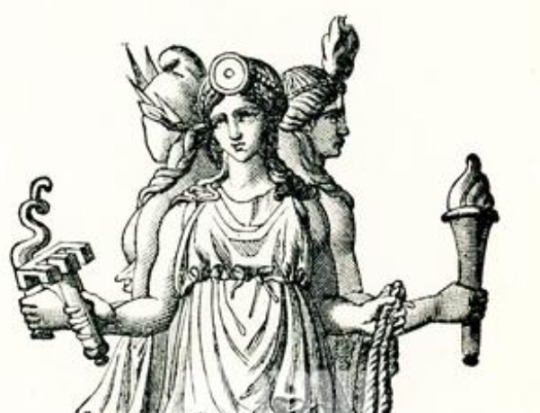
She holds torches and keys, which are symbolic of her ability to guide people in the underworld and to travel among dimensions. Sometimes, she can appear as a dog, which is her sacred animal.
Hecate is one of the Goddesses associated to the moon. In particular, she is the falling moon to Artemis's crescent moon and Selene's full moon. According to other traditions, she is a part of Artemis/Diana. This Goddess is the Moon in the Sky, Artemis on Earth and Hecate in the Underworld. Whatever the case, both Artemis and Hecate have a triple nature to them.
This triple nature makes Hecate an example of Triple Goddess in modern Neopagan religions. The Triple Goddess is the archetype of a female deity linked to the three phases of a woman's life. Youth (Maiden), Maturity (Mother) and Old Age (Crone). Her male counterpart is the Horned God.
As you see, Hecate is hard to define. Just like Neo. Both are ambiguous and difficult to grasp. Still, let's try to understand ice-cream girl better by using this mysterious Goddess. Let's focus on three things (obviously :P):
Hecate's link to the number 3 and how it is used in Neo's story
Hecate and Artemis's bond and how it mirrors Neo and Ruby's
Hecate's imagery and attributes and what they mean for Neo
The first is an analysis of Neo's interiority (microchosm). The second explains Neo's role in the story (macrochosm). The third offers a synthesis and a conclusion (balance).
RULE OF THREE (MICROCHOSM)
Hecate is known for her three heads and three bodies. Neo is a normal human, but the number 3 still comes up in her design:

Pink, white and brown. Strawberry, vanilla and chocolate. The three flavours of the Neapolitan ice cream. The three sides of Neo's self:
We are ruled by thirds. In fashion we compare no more than three colors. Our personalities are defined by the id, the ego and the super-ego- always warring vying for control. But our goal is harmony. Balance. (Roman Holiday, chapter 13)
According to Freud, the human mind is made of three parts. The id is where fear and wishes lie. It is a primitive and instinctive force. The superego is society’s expectations. It is where morality and ideals are. The ego is what balances the other two parts. It mediates between wishes and duties.
As per Roman Holiday, Neo is a combination of Neopolitan (pink), Vanille (white) and Trivia (brown). So, Neo's color scheme is a metaphorical representation of id, superego and ego:
Pink represents the id - Neopolitan is Trivia's pink imaginary friend. She embodies everything the child is forced to repress, like her pink eye and her wish for freedom.
White represents the superego - Vanille is Trivia's surname and a shade of white. The Vanilles want their daughter to fit into society and despise her disability, which makes her "odd".
Brown represents the ego - Trivia has brown hair, wears brown clothes and a brown contact lens. She is conflicted between her parents' expectations and her own wishes.
In her childhood, Trivia is unbalanced because her family forces her to repress her id. She cancels her pink side and projects it on her imaginary friend Neopolitan. So, Trivia undergoes a transformation and claims this part of herself back:
As the old saying went, “You can’t put the moon back together”. At times you had to destroy something to make something even better in its place. When Mama had shattered Neopolitan in front of their burning house, Trivia finally understood that she had been broken all along. Losing her friend was Trivia’s first step toward putting herself back together and embracing her true, best self. (Roman Holiday, chapter 11)
She re-arranges herself and her three parts:
Pink becomes the color of Neo's ego (her truest self). She stops hiding her eye and dyes half of her hair pink. Similarly, she embraces her Neopolitan persona more.
Brown becomes the color of the superego. It is a color linked to Neo's female authority figures like her mother (Carmel) and her teacher (Beatrix Browning). It is still present in Neo's color scheme, but much reduced. Similarly, Trivia is still there, but feels more like a mask than Neo's real self.
White becomes the color of the id. It is the color of Neo's family name, which she sheds. However, Neo still loves her parents, so her semblance dyes a lock of her hair white as an unconscious response to their death.
Roman Holiday is the story of Trivia Vanille's death and Neopolitan's birth:
As far as she was concerned, Trivia Vanille was buried under that mess, too. Neopolitan was the sole survivor. (Roman Holiday, chapter 26)
Neo leaves behind her parents and their strict rules to become a living manifestation of the id:
She just wanted to do whatever she wanted. And for the moment, what she wanted was to help Roman set the world on fire. (Roman Holiday, chapter 26)
Neopolitan does whatever she wants, even if it hurts others. She embraces her deepest wishes and chaotic emotions. This is the character we meet at the beginning of RWBY.
Well, Neo's arc in the series is to discard this person and to become someone new once again. After all, Neopolitan's name is linked to renewal and transformation. "Neopolitan" comes from Naples, which means "new city" (neo + polis). Naples's fantastic origin itself is a story of death and rebirth. According to the legend, this Italian city is born from a Siren, who dies for love. Her body transforms into the city and gives new life.
Similarly, Neo is a character able to be reborn countless times (neo = new + poly= many). So is Hecate, whose name may refer to the Greek number 100, as the Goddess is said to have one-hundred forms.
Our Neo/Hecate is then a multifaceted force, who goes through destruction just to embrace creation.
Neo's change in the series starts with a loss:
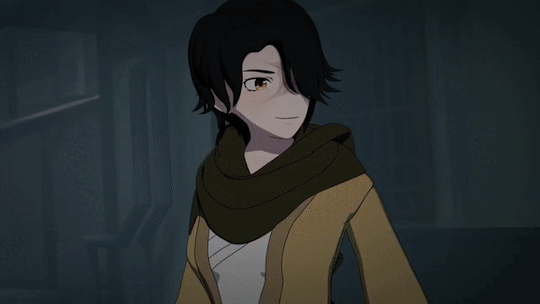
She loses both Roman and her inner balance:
There was one thing
To help escape the misery
And now it's all disarrayed
You took my whole life away
You sent me back to nothing
Now you'll pay
So, she needs to rebuild herself once again:
We must live with balance
But balance is blind
(Lost her world)
Vengeance is a riptide
In a fairy tale, she'll find
Inside
A new me, I'm ready
But who will I find?
Inside
I've gotta let go but could I lose my mind?
Volume 9 is where this inner transformation takes place. This time the new found harmony among id, superego and ego is not described by Neo's three colors. Rather, allusions are used.
In the Ever After, Neo is associated to three different Wonderland / Through the Looking Glass characters:
The Hatter, who represents the id
The Cheshire Cat, who represents the superego
The Jabberwocky, who represents the ego
THE HATTER - THE ID
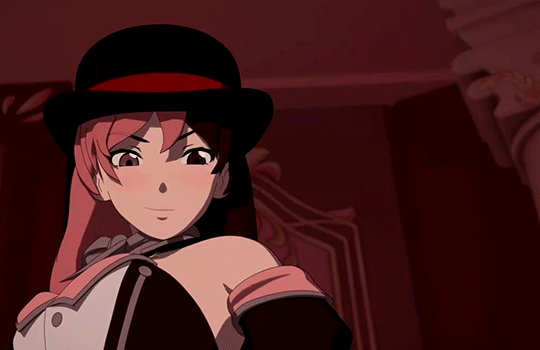
“Well, I'd hardly finished the first verse," said the Hatter, "when the Queen bawled out 'He's murdering the time! Off with his head!'"
"How dreadfully savage!" exclaimed Alice.
"and ever since that," the Hatter went on in a mournful tone, "he wo'n't do a thing I ask! It's always six o'clock now.”
The Hatter is a Wonderland and Through The Looking Glass character. He is famous for the Mad Tea Party, where he, the March Hare and the Dormouse chat with Alice. The original book reveals that the Hatter "killed time" while singing, so Time refuses to run normally for him and his friends. As a result, they are stuck in an eternal tea-party, as it is always tea-time for them. In the 1951 Disney movie, instead, he celebrates Alice's unbirthday.
Neopolitan has been stuck in time since Roman's death. She can't move on, so she focuses all her energies on revenge:
So close to closure
The one thing you need
Underneath a monument with
a dedicated plea
Killing Ruby becomes Neo's One Thing to the point she organizes a special tea party of her own:
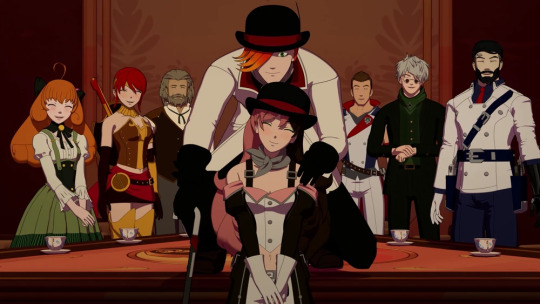
Ruby's unbirthday party, to be precise:
Cinder: And you… should have never been born…
Where she can dissolve Little Red in a cup, as if she were a sugar cube:
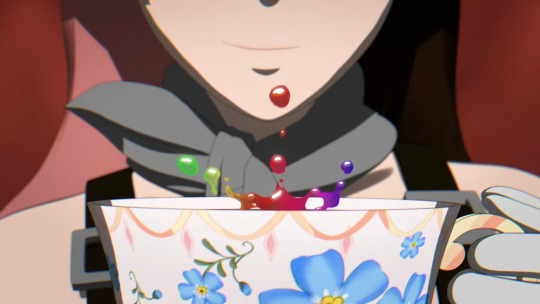
Kill for kill
Eye for eye
Blood for blood
It's time to die
Retribution tastes so sweet
The Hatter is a hostage in his tea party and Neo is a prisoner of her revenge. Both are consumed by their inability to go on. Both have killed time and can't face their future.
In Neo's case, the reason why she murders time is pretty clear. It is a coping mechanism to avoid grief:
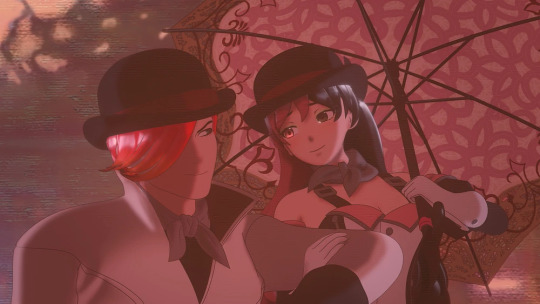
In Wonderland, the Hatter can drink tea at every hour. In her fantasy world, Neo can stay with Roman forever:
Neo-Roman: Y’know once Neo realized where she was, everything changed. Always loved the idea of a place to run away from it all. Do whatever you want. I offered that to her back on Remnant.
This is also why the first thing Neo does after landing in the Ever After is to evolve Overactive Imagination and to kill the Jabberwalker:
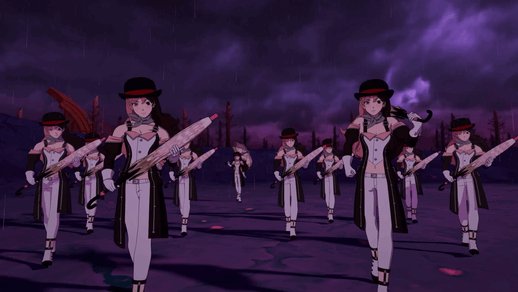
The creature is symbolic of death, as they kill Afterans permanently. So, Neo metaphorically negates her grief (the Jabberwalker) through illusions (her semblance).
At the same time, Neo enters the Ever After and gives in to her id. She has her desires and instincts control her completely. She loses all filters:
(Then suddenly)
Scratched through the surface
And you've found a key
Unlocking what you thought was safe inside a box
But it's somehow been set free
(Finally)
Overactive Imagination's evolution is a physical representation of this psychological process. Neo spirals throughout Mistral and Atlas, but in volume 9 she hits rock bottom and stops acting rationally. She becomes the incarnation of her anger, which manifests through her semblance. Her illusions are typically silent. However, in the Ever After they speak, as Neo is letting her inner voices out of the box:
Say something real
Do you only speak in riddles, chatterbox?
I'm waiting for your ugly mouth to spit it out
This is why she becomes a chatterbox. She tries to communicate through her creations.
In particular, she makes an imaginary Roman (the Hatter), who looks and sounds like the real deal. He becomes the dominant voice in Neo's mind and speaks to and for her. His presence highlights Neo's inability to accept Roman's death. She hides in a lie. Just like Trivia used to cower behind her imaginary friend Neopolitan. As a child, Trivia can't accept Neo is a part of her. As an adult, Neo can't accept Roman isn't with her anymore. In this way, Neo's first real human connection gets reduced to an imaginary friend. This is the tragedy of Neo's adventure in the Ever After.
All happens because Neo surrenders herself to the id (her inner world). Still, it can't last forever. The id is a powerful source of energy and drive, but it is also destructive. So, Neo self-consumes until she has nothing left:
Neo-Roman: (voice in Neo’s head) You’ve finally done it! Little Red’s gone. With your Semblance stronger than ever now, we can take over this whole absurd place! Why not? Offing Little Red can’t be all you wanted… Right?
She puts so much into destroying Ruby, that she ends up empty. A vessel for others to take advantage of.
Curious Cat: You’ve lost something most important, haven’t you? And now you have nothing left. How delightful! An empty host, perfect for me to fill.
THE CHESHIRE CAT - THE SUPEREGO

The Cheshire Cat appears twice in Alice's Adventures in Wonderland. The first time, he guides Alice at a crossroad and points her towards the March Hare's house. The second time, he appears at the Queen of Heart's croquet game as a giant head. The Queen and King are offended by his presence and want to behead him. Still, he is a head without a body, so the execution of this death sentence is complicated. Eventually, he simply fades away and disappears.
The character is inspired by the saying "grinning like a Cheshire Cat", whose origin is unknown. Among the many hypothesis, there is one about a grinning cat-shaped cheese. The cheese was cut from the tail, so that the last part eaten was the head of the smiling cat.
In RWBY, the character who alludes to the Cheshire Cat is not Neo, but the Curious Cat. Still, Neo and the Cat's stories are intertwined, as they destroy each other. The Cat possesses Neo and Neo kills the Cat.
Both characters eat and get eaten. They eat like the two wolves of Ruby's Little Red Riding Hood. They get eaten like the cat-shaped cheese, until only a floating head remains. A head separated from the body. A mind detached from reality:
“We’re all mad here. I’m mad. You’re mad.” “How do you know I’m mad?” said Alice. “You must be,” said the Cat, or you wouldn’t have come here.”
Neo and the Cat are mad, so they meet in the Ever After. However, their madnesses are opposite:
Neo loses herself in fantasy (the Ever After) and runs away from the real world (Remnant). She lets her unconscious feelings (id) run wild.
The Curious Cat is trapped in fantasy (the Ever After) and wants to reach the real world (Remnant). They are consumed by an imposed purpose (superego):
Curious Cat: I’m not like the other Afterans here, I’m cursed with curiosity. I need to know everything!
Blacksmith: A terrible thing to have a broken heart… And there’s nobody to send them (the Cat) back to the Tree for repair.
So, Neo and the Cat are foils, which is why they share the song Chatterbox. Both blabber non-stop. However, Neo's illusions speak her truest self. The Curious Cat instead uses smart words to hide their real intentions. Neo shows her inner beast (the shadow), while the Cat wears a mask (persona). So, Neo is the embodyment of the id and the Cat is her estranged superego. They are an external force, who comes and takes control of Neo's life:

The possession is a metaphor of Neo's state of mind. She goes from moving many characters around to becoming a controlled puppet. From shouting to radio silence. This switch is conveyed through the Curious Cat speaking through and for her.
This is Neo's nightmare, as her life is a struggle to be heard. Among other things, Neo refuses devices that make her sound robotic. She dislikes artificial voices because they sound fake to her. And yet, the Curious Cat forces Neo to speak their words. The Cat becomes Neo's new voice.
This is the result of Neo losing her inner drive:
NeoCat: She has no attachments to your world. Nothing to return to.
She is left with no wishes nor fears. She is a living id, who transforms into a walking superego. However, both extremes are wrong. A person is made of both her id and her superego. Both parts are needed to make an individual, which is why Neo is asked to face herself once more:

The Tree has the girl confront the pain and grief she has been ignoring. And yet, these feelings are what saves her:
NeoCat: No! These cracks, these feelings! I can’t… I can’t!!!
Thanks to them Neo gets back in control of her life. Symbolically, the Jabberwalker she kills in the beginning appears to finish the Cat off:

In this way, the cycle is complete and Neo's ego can finally surface.
JABBERWOCKY - THE EGO
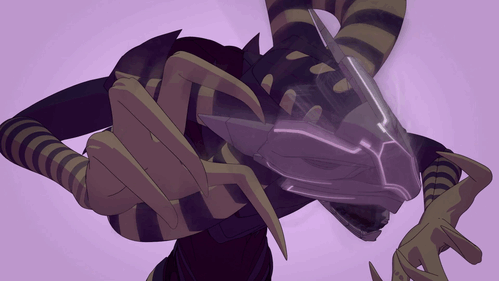
Beware the Jabberwock, my son!
The jaws that bite, the claws that catch!
The Jabberwocky is a nonsense poem Alice finds in Through The Looking Glass. She initially can't read it, but then she realizes the verses are written in mirror-writing. She holds a mirror to the text and the poem appears. Despite being able to read it, though, Alice can't understand it:
"It seems very pretty," she said when she had finished it, "but it's rather hard to understand!" (You see she didn't like to confess, even to herself, that she couldn't make it out at all.) "Somehow it seems to fill my head with ideas—only I don't exactly know what they are! However, somebody killed something: that's clear, at any rate."
The poem conveys two main ideas:
It tells about a slaughter:
He took his vorpal sword in hand:
Long time the manxome foe he sought—
So rested he by the Tumtum tree,
And stood awhile in thought.
And as in uffish thought he stood,
The Jabberwock, with eyes of flame,
Came whiffling through the tulgey wood,
And burbled as it came!
One, two! One, two! And through and through
The vorpal blade went snicker-snack!
He left it dead, and with its head
He went galumphing back.
It is impossible to understand, as it is full of gibberish and invented words
This is true for RWBY's Jabberwalker, as well:
They embody death, as Afterans killed by this creature are negated ascension
They jabber as they walk, which is why they fail to communicate with others
How does this relate to Neo? She kills the Jabberwalker, but assimilates them in her illusions. This happens because the creature is Neo's mirror. They reflect our Hecate in the making.
The Jabberwalker is a monster of grief who dies unheard:
Jabberwalker: Stop… It… Cease! No! NO! NOOOOOO!
Neo is a villain whose grief stays unrecognized:
Ruby: If you’re looking for an apology, you’ve wasted your time!
Not only by others, but by Neo too. She kills a part of herself in the Jabberwalker. Her most vulnerable and real part, that wants to communicate:
Say something real
Do you only speak in riddles, chatterbox?
I'm waiting for your ugly mouth to
Say something real
Do you only speak in riddles, chatterbox?
I'm waiting on your ugly mouth to spit it out
She is a chatterbox that screams, but is not listened to. She can't talk, then she gains the ability to speak through her semblance. And yet, she can only be heard. Never understood. Similarly, Alice eventually learns how to read the Jabberwocky poem, but doesn't comprehend it.
This is why the Chatterbox song is so mysterious. Is it about Neo? The Cat? Both? Who sings what? Are they singing to each other? Or is it Ruby singing to them? It is impossible to say, just like it is impossible to grasp the full meaning of the Jabberwocky.
So, this song is about Neo and the Cat, but plays while RWBYJ fight the Jabberwalker. That is because the monster represents Neo's frammented self. They are the girl's ego, which is so broken and confused she herself negates it. Her journey in the Ever After, though, helps Neo find inner clarity:
(Waiting for it
Sugar-coated
All you need is here
Come and find what
Redefines you
Make it crystal clear)
By the end she sees herself crystal clear:
Neo-Roman: To have what they have. What a thing, huh?
Her true wish is the same as ever. She wants a real connection. To succeed she has to let go of an imaginary one:
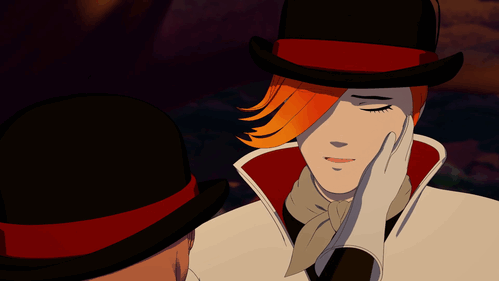
As a child, Trivia lets go of Neopolitan and finds Roman. As an adult, she lets go of Roman to find someone else. Trivia dies and Neo is born. Neo dies and someone new is born:
Blacksmith: She will have the chance to return her broken heart… And becomes something new. Such is balance.
Life from death. Creation from destruction. This is what transformation is. Symbolically, Neo kills all her three parts. She murders the Jabberwalker (ego), she rips the Curious Cat to shreds (superego) and finally releases Roman's illusion (id). Now, she is ready to move on.
HECATE AND ARTEMIS = SHADOW AND LIGHT (MACROCHOSM)

Hecate/Trivia and Artemis/Diana are two intertwined Goddesses. In particular, Hecate is sometimes described as a part of Artemis's triple identity. This Goddess is:
The Moon in the Sky (The Crescent Moon to be precise)
Artemis/Diana on Earth (Goddess of hunt)
Hecate/Trivia in the Underworld
Doesn't it remind you of anyone?

Ruby is
Associated with the Crescent Moon (Crescent Rose)
The best Huntress of all
A Red Grim Reaper with a Scythe
She is the Artemis (Crescent Moon) to Neo's Hecate (Falling Moon). This is why Neo's role in volume 9 is to play Ruby's Jungian Shadow:
In analytical psychology, the shadow is an unconscious aspect of the personality that does not correspond with the ego ideal, leading the ego to resist and project the shadow. In short, the shadow is the self's emotional blind spot, projected as archetypes.
The shadow is everything that is repressed or hidden. In Ruby's case that is her emotions over loss and grief. So, Neo becomes what links Ruby to these feelings of death. Just like Hecate/Trivia is the part of Artemis/Diana, who appears in the Underworld. This is why Neo and Ruby fall together in the Ever After.
During their fall, Neo transforms in three people Ruby cherishes: Oscar, Yang and Penny. What do they represent?
They are linked to future, present and past. In particular, Oscar is waiting for Ruby outside (future), Yang is in the Ever After with Ruby (present) and Penny is lost (past).
They are the three people Ruby's conflict is focused on in the Atlas Arc. In volume 7, Ruby disagrees with Oscar on telling Ironwood. In volume 8, Ruby and Yang fight over what to do. In volume 9, Ruby must overcome Penny's death.
These two meanings are linked to two roles Neo fulfills towards Ruby. That of Triple Goddess and that of Goddess of crossroads.
1- The idea of past, present and future ties into Hecate being a Triple Goddess:

The fates are a representation of this Goddess and a declination of the Three Hecate Sisters, also known as Maiden, Mother and Crone. They are archetypes linked to three different phases of life. Youth, maturity and old age. In other words, past, present and future.
As Ruby's Hecate, Neo often brings up past, present and future throughout volume 9. Here is a quick list:
Ruby and Neo's fall in the Ever After (Penny is past, Yang is present and Oscar is future)
Ruby's first meeting with the Blacksmith, which is followed by the appearance of Neo's Jabberwalkers. There Ruby sees three weapons. Penny's sword is Ruby's inner child (past). Alyx's knife is the role Ruby is currently trying to fulfill (present). Summer's axe is who Ruby wishes to become (future)
Ruby's fight with Neo's Jabberwalker, where Ruby hallucinates three people. Cinder is the foe Ruby lost to (past). Penny is her current inner demon (present). Salem is the villain Ruby must eventually face (future)
Neo's crazy tea party, where Neo destroys Ruby by using three loved ones. Penny is a dead friend (past), Oscar is a friend Ruby could kill (future) and Little is a friend that dies (present)
Past, present and future haunt Ruby, so that she can accept who she was, understand who she is and move towards who she will be:
Past Ruby: So, are you a Huntress? Like the ones you read about in books?
Ruby: I… I don’t know…
Past Ruby: They always saved the day, didn’t they? Always knew what to do. Always won in the end.
Ruby: But… life isn’t like a fairy tale…
Past Ruby: That’s right! It’s up to you to make things better, isn’t it? Everything all depends on you! Your sister needs you, your friends need you, the whole world needs you to keep fighting, forever and ever, against an invincible monster that took your mother!
Past Ruby: Mom was the best… but even she failed. That doesn’t seem fair. None of this seems fair.
Ruby: But… What am I supposed to do…?
Past Ruby: You can do whatever you want. Be whoever you want! You don’t even have to be Ruby Rose… So, what are you gonna be?
2- Neo brings to the surface Ruby's inner conflicts. She starts with the three struggles Ruby faces in Atlas and she keeps going by using her Jabberwalkers to re-create Atlas's destruction twice:

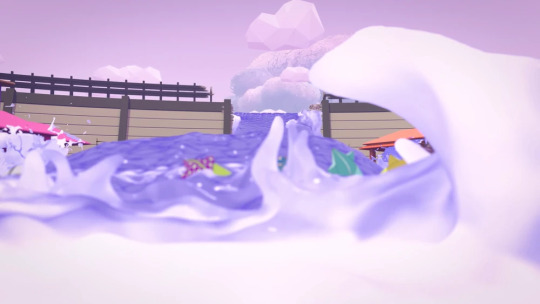
Finally, she has Ruby fight her inner demons all at once:
Neo-Ironwood: Who were you to think you knew what was best for Atlas?
Neo-Pyrrha: I was the best and brightest Beacon had to offer. But I traded my life so my friends could live!
Neo-Penny: Just like you were too late to save me at the Vytal Festival… I died in Atlas too, didn’t I? (walks towards Ruby) Can you imagine what that's like? To be completely and utterly failed… time and again… (kneels down to Ruby) by someone who meant the world to you…
Neo-Pyrrha: How many more people are going to die because of you?!
Ruby: I’m trying to save everyone!
Neo-Ironwood: And yet with all your best intentions… Have you ever stopped to wonder if you’d done more harm than good?!
Ruby: It’s not my fault…!
Neo-Ozpin: How many more lives do you have to ruin before you realize you’re not cut out to save anyone?!
Ruby: NO!!!
This happens because Neo is a manifestation of Ruby's id. Just like Hecate is a Goddess linked with crossroads and choice, Neo forces Ruby to transform.
Ruby's hidden self and her conflictual feelings are intertwined in Neo, who is the part of herself Ruby refuses to aknowledge until it explodes.
Let's juxtapose these two scenes:
Ruby: What is this about? The White Fang? Roman Torchwick?
Ruby: Is that seriously what this is all about? You still blame me for what happened to Torchwick?!
In volume 4, Ruby asks Tyrian why he is after her and mentions Torchwick. In volume 9, Ruby is surprised Roman's partner wants to avenge him. This happens because throughout Mistral and Atlas, Ruby starts shouldering too much responsibilities by herself. Her whole ego becomes intertwined with the duty to stop Salem. By doing so, she neglects other parts of the self:
Maria: You know, you don't give yourself enough credit.
Ruby: Oh… Thanks.
Maria: That wasn't a compliment.
Which leads to the shadow suffering and festering. Inside Ruby, the shadow is her grief and trauma. Outside, the shadow is Neo. A secondary villain with a revenge agenda, which is nothing compared to the threath Salem represents. And yet, Neo's personal grudge grows until she becomes dangerous for Ruby's own existence:
Neo-Roman: You don’t deserve to die, Red. You deserve to be broken down… Torn apart… wiped from existence.
In this context, Ruby refusing to empathize with Neo is really Ruby refusing to empathize with herself:
Give me anything
But this symphony of technicolor rage
You call it righteous, meaningful
It's anything but love
Don't take me for a fool
I know this all too well so
Leave your tears to someone else cuz
It's not just you who lost it all
Neo kills the Jabberwalker because she doesn't want to accept Roman's loss. Ruby doesn't see Neo because it would mean to look at her own pain.
The end result is bad for both girls. On the one hand Ruby is overwhelmed by trauma and chooses to disappear. On the other hand Neo realizes how empty she is after Ruby is gone. That is because shadow and light can't live without each other. They need to integrate, which is what Ruby and Neo do by the end.
Both see themselves more clearly, so they are finally able to empathize with each other:


Their conflict almost kills them, but once they get throught it they are ready to become better versions of themselves. They die and are reborn:

Since she had used her Semblance for the first time to create a butterfly with one pink wing, one brown, with white spots all over- then sent it out her bedroom window and watched it flutter away until she lost sight of it and let it go. (Roman Holiday, chapter 11)
Like two butterflies, who step into a brand new phase of their lives.
HECATE (BALANCE)
Neo's story is about finding balance inside and outside:
Inside- As a child, Neo is too repressed (superego), so as an adult she becomes uncontrolled (id). Her arc has her grow more balanced (ego).
Outside - In volume 9, Neo is Ruby's shadow (id) and brings out all of Ruby's negative emotions. By the end, though, Ruby is able to understand Neo and feels sympathy for her. This is because our LRRH doesn't refuse her own shadow anymore.
In other words, Neo is an id character, who has to integrate both with herself and with the world around her. This fits Hecate, who is a Goddess linked to the Underworld. The Ever After itself is a representation of this kingdom for three different reasons:
It is the world before (under) Remnant
It is the world of the deads (buried under)
It is the world of the unconscious (buried inside)
This is why Neo's semblance grows more powerful while there. Hecate is the queen of ghosts and Neo grows powerful enough to rule the Ever After with her materialized spirits (illusions). On a deeper level, our lady of the deads must face her own grief. So, like other characters, Neo goes through the stages of grief. In particular, Neo's stages are represented by her reactions to different characters:
The Jabberwalker she kills (negation)
Ruby she stalks and tortures (rage)
The Roman she materializes (bargaining)
The Curious Cat she is controlled by (depression)
All these meetings are a part of her journey to find both acceptance and herself. Maybe this is why throughout volume 9 she progressively becomes more and more Hecate-like. As a matter of fact, she aquires many attributes of the mysterious Goddess.
She gains her personal Empusas:

The Empusas are Hecate's demons, who look like girls with some odd body parts. In this case, Neo's heterocromia.
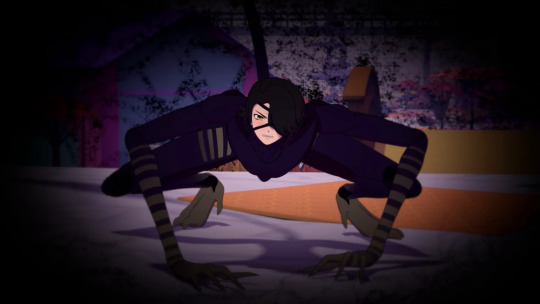
The Empusas are usually monsters linked to fire that appear as half-dogs. Here, Ruby sees the Jabberwalker with Cinder's head.
She finds her own Horned God:

The Horned God is the Triple Goddess's companion in neopagan religions. The Jabberwalker is a horned creature associated with Neo.
She commands a pack of dogs (the Jabberwalkers) and she herself plays the part of Ruby's dangerous wolf. This fits with Hecate's sacred animals being dogs.
Finally, she stands beside a wicked torch:
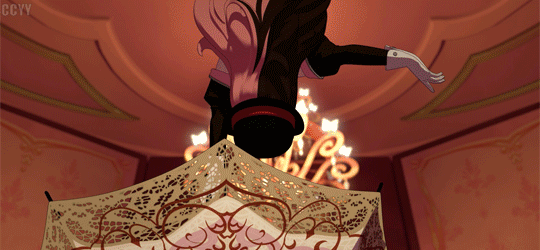
Torchwick-illusion is her companion in the Underworld and a symbol of her friend's lost soul. She even uses Roman's voice to lead Ruby towards death. Just like Hecate holds torches to guide mortals in the Kingdom of the Deads.
Despite all this, there is still an attribute missing: keys. They represent Hecate's ability to travel through worlds. However, Neo is stuck in the Ever After:
Jaune: So Neo can’t go through the door…
This happens because she has still to fully bloom into Hecate (herself). However, she is making progress and by the end of volume 9 she reaches acceptance. A necessary step to grow.
In particular, she dispels her illusion of Roman. She overcomes her grief by overcoming her own fantasies. This is interesting because it is the opposite of what happens in Roman Holiday:
“He caught a lock of her hair and showed it to her. It was white. “This is new. It suits you,” he said. Why would she have done that with her Semblance?” (Roman Holiday, chapter 26)
There, she represses her sadness over her parents' death, which manifests in her illusory white lock of hair. In the series, though, she lets go of an illusion to move on. Why is that so? That is because Neo herself is a combination of illusion and reality:
“Roman shook his head. “Show them who you really are.”
Neo changed back into herself, but swapper her school uniform for her favourite suite. Roman handed her her parasol.
(Roman Holiday, chapter 22)
Roman Holiday is the story of how she realizes illusions are a part of who she is. Volume 9 is where she learns she can't live in a world made only of illusions. So, she chooses to face herself for real:
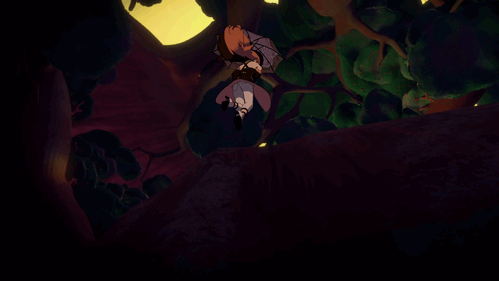
Once she emerges from the Tree, she will gain her allusion's ability to move freely between dimensions (psychopomp) and will go through the door. She will leave her fantastical world (the Ever After) and come back to reality (Remnant).
#rwby#rwby volume 9#rwby meta#neopolitan#neopolitan (rwby)#neo rwby#ruby rose#roman torchwick#curious cat#jabberwalker#once upon an allusion#my meta
208 notes
·
View notes
Note
I don't think I've ever seen anyone say much about loveday before, if the mood strikes you I'd love to hear what makes her compelling to you!
oh god you can really pinpoint how long someone’s been following me based on whether or not they’ve ever seen me (or anyone) say much about loveday. i will try to make my handful of thoughts here brief—a lot of this is somewhat corollary to my fucking massive backlog of takes about cytherea, which i feel is fitting considering we can pretty much only get a sense of ms heptane through what we know about her terrible terrible girlfriend.
i think the main thing i find interesting about loveday heptane is her role as this kind of invisibilised governing structure that, like, scaffolds the discourse of gtn. if the core drive of the book is (as i would argue it to be) gideon “learning” cavalierhood, and by extension us as readers understanding what cavalierhood “means” relative to the discourse of the text, then part of how this process of elucidating cavalierhood-as-subject-position takes place is in this three-way interplay that happens between gideon, loveday, and protesilaus relative to cytherea. put simply, gideon, loveday, and protesilaus can be understood as cytherea’s three cavaliers, and placing them in this equivocal discursive position allows us to draw useful conclusions about how we might understand the nature of cavalierhood, and how that understanding might be informing the wider narrative.
because the narrative focalises gideon as our protagonist, we could argue that she takes primacy within this triad, so perhaps another way of putting it is that everything she does relative to cytherea (and, later, harrow, though i think it’s significant that cytherea acts as a catalysing force towards the creation of that cavalier subject position that drives the book) ought to be examined with reference to a) protesilaus and b) loveday. as i said, all three occupy a discursively equivalent position relative to cytherea—that of the cavalier. so when we see this kind of courtship unfold between cytherea and gideon, and take on the language of grooming, objectification, predation, etc., alongside this process of, like, subjugating her, subduing her into a position whereby cavalierhood becomes a coherent possibility, we can understand one dimension of cavelierhood as a subject position to involve a form of sexual subjugation made somewhat salacious by its being socially taboo. at the same time, protesilaus as functionally cytherea’s cavalier is a dead body being reanimated, wholly at the behest of cytherea’s will, and loveday as cytherea’s cavalier is long dead, mourned, batterised, and made into a symbol of devotional grief (‘cytherea loveday’). when gideon ‘learns’ cavalierhood, she is ‘learning’ how to become the reanimated corpse and the beloved battery and the site of sexual availability. all three are then operating in tandem to make the nature of cavalierhood legible to us.
(i think this is at its most salient in the avulsion scene, which is one of the few moments in the book where we see cytherea make a fairly straightforward reference to loveday with “I’m sorry. We take so much. I’m so sorry.” there’s also this—
She said abruptly, “Why did you want to be a Lyctor?”
[...]
The older woman was leaning against Protesilaus’s arm. She looked extraordinarily sad, even regretful; when she caught Gideon’s eye, a tiny smile tugged on the corners of her mouth, then drooped again. Eventually, she said: “I didn’t want to die.”
—preempting her much later and more straightforward claim to palamedes that she & loveday went through with the lyctoral process because she “thought it would make me live.” this alongside the suggestion that she looks ‘regretful’ and the attention paid to gideon in a sentence that seems to be covertly about cytherea’s grief imo makes a fairly solid case for reading this exchange as another passing reference to loveday; there’s an emphasis, however covert, placed on cytherea’s grief and guilt in this chapter that hasn’t thus far made itself especially apparent. & it’s significant that these references crop up alongside a scene which has gideon acquiesce to being subjected to a brutal process of batterisation which serves as a fairly efficient metonym for the entire lyctoral process, and arguably by extension the entire state of cavalierhood, and also sees cytherea use language like ‘darling,’ ‘good girl,’ ‘poor baby,’ ‘i’ve got you,’ &c. &c. specifically to facilitate that process; these complex, overlapping networks of sexuality & subjugation & death & grief & lyctorhood are being put to pretty significant work in that chapter.)
re. loveday specifically—i’m really interested as well in the fact that, like, the seventh house seems to have this specifically chivalric culture attached to it (more so than some of the other houses, though it’s seemingly present across the whole internal body of the empire to some extent). we see this in, for instance: cytherea and dulcinea are duchesses when a duchy is a medieval apportioning of land; protesilaus and [presumably] loveday’s title is ‘the knight of rhodes’; dulcinea’s name references don quixote, which examines and parodies the conventions of chivalric literature and culture in spain. gideon and cytherea’s relationship is conducted rather like a courtship between a knight and a lady; though this speaks more to empire-wide social conventions around cavalierhood as a whole, i think it’s interesting that the narrative focalises cytherea (of venus!) when drawing attention to dynamics of love & sexuality within the relevant social order. all this is to say that i think cytherea and thus loveday by extension fit pretty coherently into the chivalric cultural narrative that muir is working from, and i think this gives us a lot of scope for thinking about what the two of them are ‘doing’ wrt gender.
& i think it’s fairly plain that the text is, among other things, interested in interrogating contemporary articulations of ‘lesbian gender’ abstracted through the various lenses that allow for diegetic consistency. what i mean by this is that, for example, we as contemporary readers who attach meaning to ‘butch’ as a descriptor know that gideon is a butch and we are to make sense of her character as such, but that’s not a gender framework that she has available and thus not a meaningful diegetic descriptor; we can’t say that gideon says or does X or Y or Z because of extant cultural norms around butchness, because those cultural norms don’t exist for her. we can, however, notice how the attention paid to rendering her as legibly ‘masculine’ in-text run parallel to (among other things) a particular kind of masculinity articulated in the language of chivalry, knighthood, &c.—which is legibly present in the text as cavalierhood, and is thus explained, historicised, problematised, all while acting as a vector by which we can think about the legibility of butchness in an imperialist social order.
(i feel like a proper reading of what tlt “does” with gender is its own post—real aveheads will remember—suffice it to say that i think the above is part of the fabric from which that discourse unfolds itself.)
i bring this up because i think loveday is something like the ur-text for this specific reading—which is why i’m so interested in her and the force she exerts over the narrative in gtn. most people seem to lean towards reading her as a butch (as a character we ought to understand as a butch &c.), and i would agree; i think it’s significant, however, that we can draw that conclusion based on cytherea’s demeanour/preferences (lol) and a handful of characteristics attributed to her in the very sparing accounts of her that we have in-text. however reliable or otherwise the accounts we have of her might be, i think it’s noteworthy that her lover remembers her as a ‘nice girl [who] died for me,’ clearly agentive in the decision to effectively sacrifice herself for cytherea (“i didn’t want to do it at all [...] she and i thought it would make me live”), memorialised in what to me reads as a symbolic marriage (‘cytherea loveday,’ the taking of the partner’s name—this along with the fact that john misremembers cytherea’s surname as ‘heptane’ and we never find out her functional ‘maiden name’ means that i think my reading of it as a gesture to marital conventions is more than fair), whereas eg. mercy and augustine remember her as ‘looking like she wanted every one of us beaten to death,’ seemingly generally unpleasant and antagonistic. this idea of someone who comes off as aggressive, unfriendly, standoffish to outsiders, but is loving, self-sacrificing, devotional to an excessively servile degree in romantic relationships is very much—not stereotypical, necessarily, but archetypal, and especially archetypal to the ‘chivalrous butch’ that i think muir is employing. add to this the things i said above about the seventh house seeming to operate on a culture of chivalry, her title being that of a knight, the kind of necromancer-cavalier relationship that cytherea solicits from gideon closely resembling a chivalric courtship, and i think there’s a case to be made for loveday as a stand-in for this archetypal ‘chivalrous butch’ that the text then probes and problematises.
this is interesting to me because i think it allows us to read loveday and her presence in gtn in particular as something of a discursive signifier rather than a fully fleshed-out “character”; i mean, crucially, she’s not fleshed out, she’s entirely subsumed by cytherea! if (and i realise i’m going a little crazy here; blorbo from my autism, &c.) we read the version of cytherea and loveday present as disciples at canaan house as representative of how butchfemme negotiations of gender can be subsumed into an imperialist social ordering via the conditions of chivalry, we can think about loveday then being collapsed into a signifier for a discursive position such that her presence in the text governs how gideon navigates cavalierhood and how we as readers understand and interpret it (cf. how i opened this piece, talking about the gideon-loveday-protesilaus triad), and how by extension the imposition of subjectivity via subjugation eschews the agency of the subject in favour of transforming them into a set of signifiers, symbols, representations, &c. (this is—i have to say it—this is the crux of the argument i make in salolita, and, as we all know, lolita is a huge part of the scaffolding of these books.) it also allows us to read cytherea as we receive her in gtn as a kind of unravelling or destabilising of that signifying dynamic, which we can of course extrapolate onto the destabilisation of the necromancer-cavalier-lyctor thing as a whole that gtn introduces and articulates through her.
and i guess i just—i’m interested in this! i think the gender angle and the subjugation angle are my two preferred ways of approaching these books, and i think it’s pretty easy to eke out some v compelling readings by kind of throwing loveday heptane at the frameworks and seeing what happens.
145 notes
·
View notes
Text


...

No comment , THIS already sums up in volumes of Rogio not learning from his lesson and Rogio not changed since he escaped from Vjall the ghoul god and the deer portal.


You had one job...

Fun fact; when I saw this page/panel for the first time, I literally felt sick to my stomach, like no lie nor joke, I felt my body convulse and wanted to puke. SO congrats kique, you're the first to ever made me feel " sick to my stomach " - literally.
BULLSHIT, WHERE'S THE ANTLERS, AND WHY THE GODESS CAN BRING BACK DEAD BODIES??!!!
YOU ALREADY HAVE A SPIRIT THAT DOES THAT!!!!!


We could have had a moment where Rogio sacrificed himself or him actually being more villainous of bartering Kargo for someone else like Ranach/ showing that he still has attachment to him. But Kique forgot his own lore again AND/OR he didn't want to use it and thought have a deer god do something that is not part of it's purpose to do it for convenience for Rogio OF ALL DOGS.
He basically cheat coded his way through. and the Deer is it's wash-down Therapist.
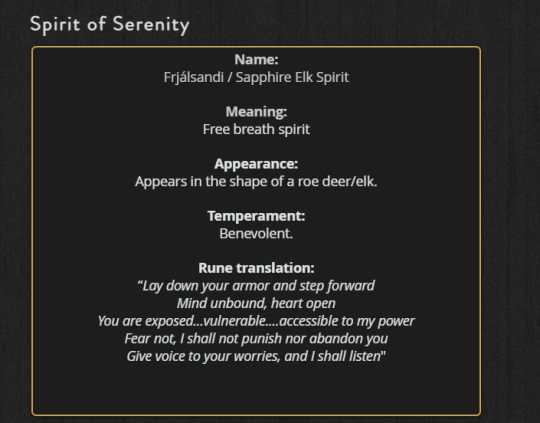
I guess free breath means a free ticket pass. to his self-inserts
there was no hidden, mystery nor some subtle text to pick apart, this is as clear as the sky guys. Not something to overthink on - not that deep. period.
----
This would also be interesting if he failed the trial or was put in a delusional area like what is showing of Kargo returning, but realized something was...off and stressing.
Like his brain is trying to tell him something but keeps digging down on this fantasy that everything is fine but it's not, and the more he digs the more plastic and distorted it felt.
So as he really, finally going deep down on himself and seeing who he truly is and he needed to work on, despite everyone telling him not to - Heck have Ranach in the mix as well to mess with his psyche. The Ghoul beast is only much a façade of what he really is the beast been consorted of preventing him from trying to change from his own mind. Rogio running deeper down the rabbit hole, we hear now everyone speaking what he thinks they're saying from his eyes as the environment becomes more warped and just become more survival horror until he sees himself, Not of the beast but of himself, His natural, crusty, dog self is the problem, is the Marghoul.
Rogio has to face the fact from him in Meteor to now, he's ' mental chain' is much more his ' chain reactional excuse' that he kept repeating and falling for. The Vjall had some strings towards him but only if it's been fed or given access to - his fears and deniability.
Rogio is given now a timestamp - LIKE ACTUAL TENSION AND DUE DATE of getting his shit together, talking with the Spirit of the dead if he really felt remorse to remand or Accept it still but remand it acknowledging his mess ups and do better. She can not cure the Ghoul, not yet at least, but she will give her a prong of her antlers to ward it off, just enough until he makes the choice. Vjal may be aware of it and would be a problem down the line.
The deer is benevolent but not a charity case, She gave her wisdom ( and therapy session) and gave them a choice with a bit of aid.
We could have had a nice Intense chapter of Rogio working himself until final conclusion of him not changing and being far worse then he was, a bittersweet one where he choice to heal, accept and admit his faults, working from the ground up with or without Roamer. or him sacrificing himself for Kargo's life as a finale apology.
The prong can either symbolizes like a barrier to protect from the Ghoul but it can also be Kargo's spirit along with him, so it adds more motivation of why Rogio has to do it or not.
Hope you enjoy that ♥
#asmundrhome#home#home comic#kique#kique7#asmundr#asmundrcomic#kiquenordin#kique nordin#bad dog comics#consistent inconsistency#constructive criticism#constructive critism#bad writing#bad webcomics#web comic#comic review#comic page#rewrite
10 notes
·
View notes
Text
There's no fucking way i'll have this go lost because of Twitter's downfall

"Design inspiration, symbolism and references behind the water beasts in New Gods: Nezha Reborn"
❗ Premise. DO NOT take what I write for absolute truth or canon material, regardless of the sources. I drew my own conclusions, heavily influenced by my own reading key. Take it as a theory!

The first creature coming to mind when looking at them is surely the Xièzhì (獬豸), a mythical beast that appears multiple times in East Asian legends. We can find a detailed description of these creatures in the Shou Pu (獸譜), a painted album created for the Qianlong Emperor from 1750 to 1761 by court artists Yu Sheng and Zhang Weibang, depicting terrestrial animals and legendary beasts and part of the Emperor's personal encyclopedia. Also known with the korean name "Haetae", the Xiezhi is depicted as a muscular beast with a likeness to a lion, goat, and unicorn (sometimes referred to exactly as a “unicorn lion”) living in the northeastern wilderness.
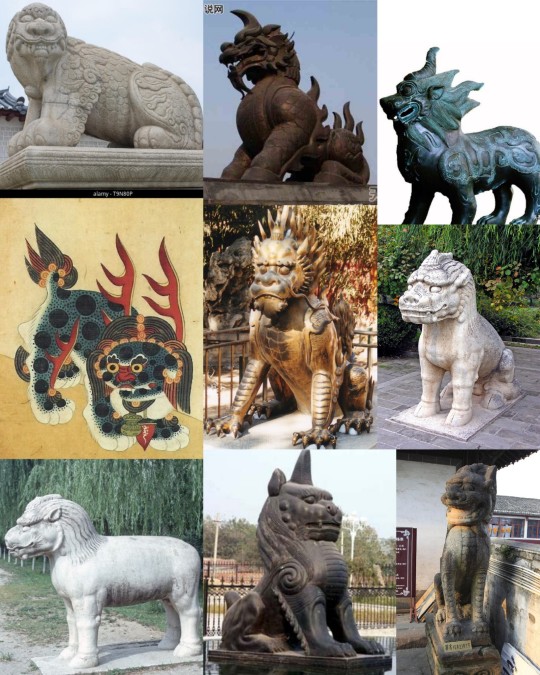
In Shou Pu, and also in many legends, it's said they're naturally able to distinguish innocent from guilty, right from wrong, making them an ultimate symbol of justice that appears a lot in decorations, paintings, buldings and clothing, giving also the name to the judicial hat (法冠) that symbolizes the impartial and effective enforcement of the law.
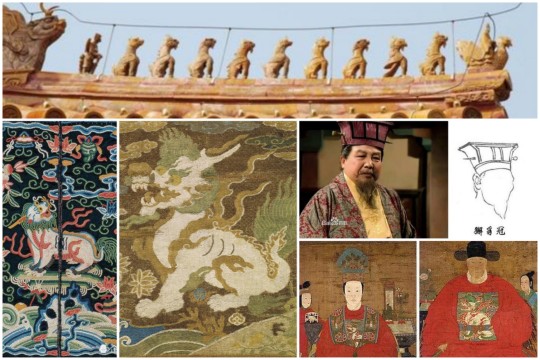
It's also known as a guardian against disaster, a symbol of water due to its fire-eating qualities and a messenger of the heaven, which also stands for a sense of justice. The attention on justice's symbolism is also drawn by another design detail of the water beasts: the third eye on their forehead. Comes natural the association with “the Eye of Heaven” (天眼), able to differentiate truth from lies, and with "the embodiment of justice" himself: the noble and powerful warrior god Erlang Shen, who is also related to hydrology in a very interesting way.
Now stay with me, because this will lead to another creature that also possibly inspired the water beasts and that brings EVERYTHING together: justice, water and floods. But to better introduce them, first we have to understand why the reference to Erlang is important.
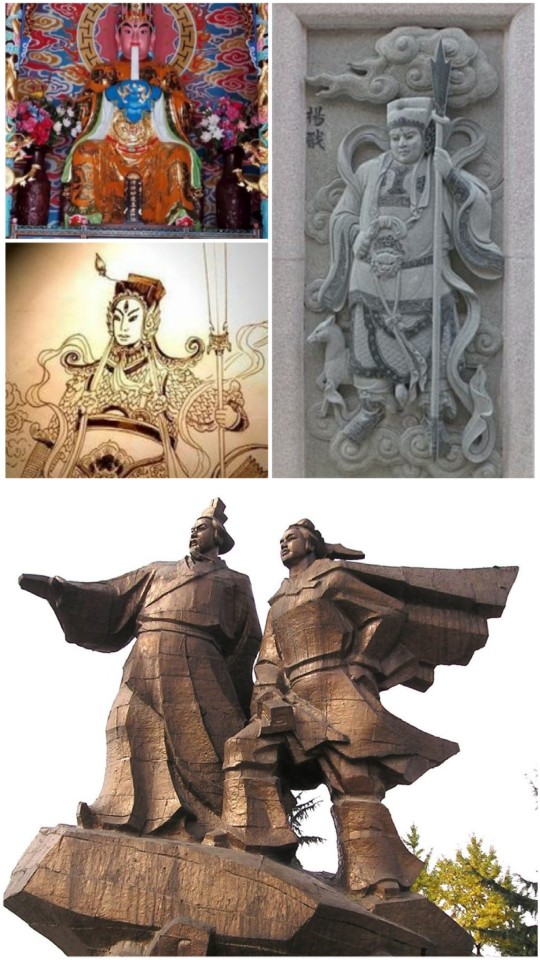
In Chinese myths, Erlang Shen is also a folk hero that helped alleviate the terrible flooding of the Min river. With his name meaning "godly second son" (er = two; lang = boy; shen = god), he was believed to be the second son of the engineer Li Bing, hired to prevent the yearly flooding that would affect the lives of the people of the Chengdu Plains and Dujiangyan city (Sichuan). However, Li Bing couldn't discover the source of the flooding, as it appeared that the flooding wasn't natural. Legend has it that Li Bing sent Erlang to sail up and down the river for a year to attempt to discover the source of the annual flood, but he couldn't discover the cause either.
One day, as Erlang is walking with seven hunters who had witnessed his bravery in slaying a rogue tiger, they chance upon an old woman who is crying at the edge of the river near Dujiangyan. She tells Erlang that she is distraught, as one of her grandsons is to be sacrificed to a dragon that has held dominion over the river for generations. Believing that he has discovered the source of the river’s flooding, Erlang volunteered to take the place of the woman’s grandson to be offered as sacrifice to the dragon instead.
When the ancient dragon arrived to take his sacrifice, Erlang and his friends leapt from hiding and chased the dragon to the river, where the old woman trapped it with chains in a pool below the Dragon Taming Temple.

With the dragon immobile, Erlang splitted the creature in half with his double-edged lance. And with the dragon dead, the annual flooding ended and peace and tranquility came to the Chengdu Plains. To thank Erlang for his bravery, the people elevated him and his father to godhood and dedicated a local temple as Two Kings Temple in their honor (The Erwang Temple in Dujiangyan).
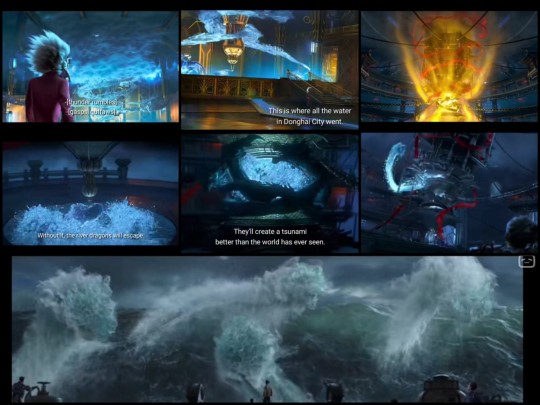
The myth of the water dragon being chained to control the hydrology of the province instantly felt familiar. And it's here that we find the connection to the water beasts.
Li Bing and his son Erlang worked at the complex irrigation system that protected the area and the people from the severe flood of the Min River: the Dujiangyan irrigation system, constructed in 256 BC, which is still in use today. In literature's classic "Huayang Guozhi·Shuzhi" is recorded that, along other clever solutions to avoid a dam, Li Bing also created 5 massive statues referred to as "Water town god beast" (鎮水神獸 if the translation is wrong please correct me!) which resembled a single horned creature similar to a rhino. With a length of more than 3m and a weight of 8 tons, two of these statues were buried in the river to "tame the water spirits". The resemblance with the water beasts, able to trap the river dragons, is astonishing. Curiously, when in July 2013 one of these statues was brought to the surface by archaeologists, heavy rainfalls occurred in Sichuan causing successive floods, and rumors spread saying "that removing the beast from its place, the water spirits couldn't be trapped anymore", followed by the request to put it back in its place claiming their ancestors "buried it there for a reason". According to a popular local tradition, rhinos are a divine beast that can help stop flooding and the newfound statues were supposedly buried by a local folk hero, more likely Erlang himself.

Back to Nezha Reborn, even if Donghai is a fictional city with the name of the raging sea where Nezha kills Ao Bing, it's located near the Eastern Sea. According to what Ao Guang says, is VERY likely that most of the water drawn in by the beasts is from the Yangtze river and its tributary the Min river itself, which would make everything coherent.
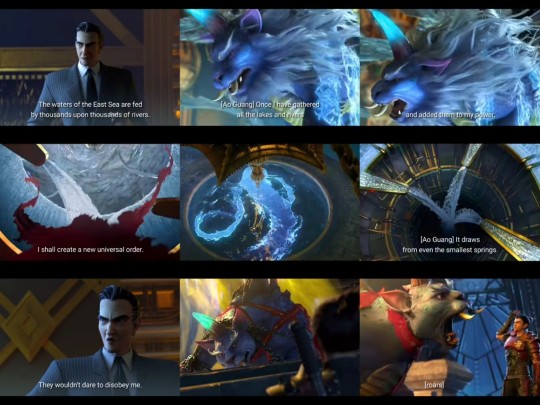
In addition to the justice symbolism of the water beasts (and this is my personal interpretation), Ao Guang's control of the waters (and, as a result, of Donghai itself) can also be represented by the chained water beasts themselves, being them the associated with a benevolent and righteous ruler. Therefore, the ending scene with Su Junzhu carrying the beast cub, can be read as justice finally being brought in Donghai following Ao Guang's demise, as the comeback of water finally marks the city's rebirth.

📚 References:
-Qianlong's encyclopedias, republished as "Natural History in the Palace Museum" by the Palace Museum Press and CITIC Press in Beijing
-A Study of Criminal Proceeding Conventions in Tang Dynasty, Xi Chen
-Lunheng 論衡, Wang Chong -Collier I. D. Chinese Mythology
-The Chronicles of Huayang (Huayang Guo Zhi 华阳国志)
-The Collection of Imperial Books of Ancient and Modern Times (Qing Dynasty) Jiang Tingxi, Chen Menglei, etc.
-Probably more I forgot to take note of 🧍
#nezha reborn#nezha#new gods#new gods nezha reborn#chinese mythology#mythological creature#chinese legend#erlang shen#ao guang#ENJOY THIS 6H WORTH OF RESEARCH BECAUSE SOMEONE ASKED WHAT KIND OF CREATURE THE WATER KITTY WAS#I hyperfocused on this so bad#I don't regret it tho#Water kitty go brrr#movie theory#Appreciate my effort for translating from chinese#Which is absolutely NOT a language i know even in the slightest#MothTalks
110 notes
·
View notes
Text
Heyyy, I rewatched the entire series again, even looking over the dumb, boring unfilling episodes. Looking back there are soooo many loose plot threads like Amity being Lilith protégé, Lilith's scrying portal (which Belos was implied to be able to see back through), Lilith’s “ go back to your world” speech, Hunter being tasked to spy on the Owl Family, Luz’s witch's cloak, anything with elves etc. Anyway I’m still confused about LOTTT of stuff. I'm just a little guy, if people don't slowly and patiently directly explain to me what things mean I will spend almost the entirety of a series completely misunderstanding important lore and only getting it around the climax. If anyone has answers that’s goooodddd. I’m kindaa having an episode of my own right now hahahhah.
1)How were the Hexsquad students able to overpower the fully trained Emperor's Coven scouts, scouts part one of one the, if not the strongest coven who’s had way more years of experience and training ?
2)How and why was the cursed Owl Beast scroll dropped? What exactly did Covenheads think was going to happen during the Day of Unity, especially regarding the human realm? What about Odalia, who knew for a fact that the draining spell was a thing that would hurt people? She expected for her family be "made royalty in the new world" but what would that new world be? What about Kimikora’s who’s apparently been spying on Belos for a while, enough to know about the Golden Guards, the Collector, and the draining spell? She still wanted to impress the Emperor, even knowing he intended to kill everyone including her?
3) Why didn’t Belos try to present his own POV of events in Hollow Mind? Why did he let Hunter and Luz walk around and make their own conclusions?
4)What are the “Inner Willow” and “ Inner Belos”? Are they separate from their outer counterparts?
5) What does Belos think the Grimwalkers are? Does he think they’re reincarnations of Caleb or copies of Caleb or separate people made from the same stuff of Caleb or empty vessels that Caleb can communicate through?
6)Why did Belos put a coven patch onto Hunter if he expected him to become Caleb?
7)I still don't understand at all how draining spell works, I think people have to be branded with coven symbols to work but then what about Hooty and all the general Isles wildlife?
8)What age was Hunter created as? He grew up “naturally” right? He went through the growth stages a typical witch or human would despite not being either, right?
9)What are demonics? How separate are witches and demons? How are demons generally treated in society?
8)Eda just stumbled upon door just like that? That easy? Why was it there? How did she know how to use it?
9) Why do some witches have less human features than others ( such as a horn or an extra eye)?
10) How did Belos bring back Basilisks? Like, I’m sure the Collector helped… but how?
11) Literally anything about the Collector’s powers, both trapped and freed?
12) Did Philip know Luzura the Crab Maiden was human?
13) Why didn’t take Lilith and Luz try to take the Collector’s disc away from Philip? He just tried to sacrificed them and it’s implied to them he did it before.
14) Isn't it implied through the Owl Beast’s flashback that there’s landmasses outside of the Boiling Isles? Are any of the characters ( besides possibly Eda) aware of this?
15) Why didn’t Belos stay until the Draining Spell entirely finished? He has all the reasons to stay in the Boiling Isles and ensure his genocide concludes as planned, especially since he could easily collect palismen from all the dead witches.
16)Lilith was Belos’s left hand, even without magic wouldn’t she at least have political and cultural knowledge of the Isles? Her naivety really offput me honestly.
Question to myself: Lilith, after not properly reading through the scroll, cursed her sister leading to her having to deal with immense suffering since her childhood. This caused immense harm to their parents as well. Lilith then joined a Coven that pushes for capture and punishment for witches like her sister and enforces everything Eda fights against. Lilith did this for a “ cure” against Eda’s wishes and even mocked Eda for her condition. Lilith almost killed Eda by forcing her to be delivered by Belos and nearly killed Luz in the process . While Luz was forced to watch her mentor and mother figure being forced away from her, Lilith spouted some speciest shit towards her. And during any of this time, she hypothetically could’ve shared the curse. Why do I like her so much? Question to myself: Lilith, after not properly reading through the scroll, cursed her sister leading to her having to deal with immense suffering since her childhood. This caused immense harm to their parents as well. Lilith then joined a Coven that pushes for capture and punishment for witches like her sister and enforces everything Eda fights against. Lilith did this for a “ cure” against Eda’s wishes and even mocked Eda for her condition. Lilith almost killed Eda by forcing her to be delivered by Belos and nearly killed Luz in the process . While Luz was forced to watch her mentor and mother figure being forced away from her, Lilith spouted some speciest shit towards her. And during any of this time, she hypothetically could’ve shared the curse. Why do I like her so much?
#long ass post#bad formatting#noelle's rambles#fandom questions#toh fandom questions#toh fandom#toh#toh critical#ever so mild#lilith clawthorne critical#under the cut
30 notes
·
View notes
Note
gosh!!!i recently stumbled across this blog and let me just say i couldn’t be happier that i did!! your art and fic are both so amazing (and you might of single handedly gotten me obsessed with cmedic, i absolutely LOVE how you characterize him istg), but i wish you luck in future fic and art endeavors! i managed to binge your fic and it has my heart absolutely gripping for more.
i can and will obsess and draw the 4 main boys forever now,
thank you :)))
(*also ps* - if you have anymore cute or sweet headcannons about these boys i would love to hear them)
Eyy! Happy to hear more people are finding my fanfic! Honestly, I started writing TBTF as a giant shitpost but I genuinely wasn't expecting it to get so much attention!
Also YES! MORE PEOPLE LIKING CMEDIC! Out of all the characters I've written, Cmedic is arguably the one I've put the most effort into because...well, he HAS no character. He was seen in a single frame of the comic, so I HAD to make a personality for him from whole cloth if I wanted him to be a protagonist.
I genuinely love how he's coming along.
As for headcanons:
Medic is Jewish and carries around a Star of David his mother gave him. While not as religious as his family, he still holds onto it to remind him of where he came from.
Cmedic is Haitian America, but was born in Connecticut. While he's not a practitioner of Haitian Voudou, his father is. His father specifically worships the goddess Maman Bridgette, a loa of death and a protector of cemeteries. Cmedic learned a lot from his father and carries around a necklace bearing the symbol of Maman Bridgette as a reminder of his family and heritage.
In addition, Cmedic has a unique view of death because of his upbringing. Maman Bridgette is a reminder that death is not to be feared, but respected as the natural conclusion of life. Her purpose is to tend to the dead and remind the living to cherish their time on Earth and live each day to the fullest (This will be a MAJOR plotpoint later)
Cheavy was born and raised in Oregon. Cheavy had a very rough childhood with an abusive, hyper-religious father and siblings who constantly pinned bad behavior on him to avoid their father's ire. Cheavy has a very poor relationship to his family and cut off all ties with them sometime after joining BLU.
Despite this, Cheavy remains in contact with his mother, who was the only person in his childhood who actually cared about him. Cheavy learned how to bake and knit from her, but he could never pursue these hobbies because of his father's rigid idea of gender roles.
Heavy's father actually sought out the help of a certain mafia when he was rebelling against the Soviet government. This mafia apparently remains in contact with Heavy's family years after his father's death, but neither Heavy nor his sisters know about this. Heavy's mother kept the truth under tight wraps, but the truth will come out in a few chapters >:]
While Cheavy and Cmedic can both pinpoint the exact date when Cmedic disappeared from the team, neither of them can actually remember what happened that night. Apparently both of them have repressed the memory...
11 notes
·
View notes
Text
Gross FotD but...
Iris managed to pop their dislocated shoulder back into place, but it's still sore. Even without this handcuff cutting off the circulation in their ankle, it wouldn't be a good plan to try to bumrush the armed guard. They've been locked up in this gangster's cement basement for over a week, and it looks like they're going to be trapped down here for a while longer. They would have to wait for the perfect opening before making their move. Just try to keep their strength and their sanity until then.
A cockroach had been scuttling around the corner of the dungeon. It would wander out of view, Iris would sleep for a few hours, then when they'd open their eyes, the insect would be crawling towards them again. After three days, the animal was finally within reach. If Iris strained against the shackle, the tips of their fingers could just barely graze the rough brown carapace. The touch still made Iris's skin crawl, but at this point it was hard not to see the roach as a makeshift pet. This was the only other living thing Iris had seen in days; it was Iris's sole source of entertainment for the foreseeable future. Iris managed to kill some ten hours cycling through possible names for the little guy, making a game out of predicting whether the creature would pace clockwise or counterclockwise next. They knew they were probably imagining things, but there was almost a sense of affection, the day the twitching little legs finally climbed into the palm of the prisoner's hand. Did the insect just come close to get a taste of Iris's sweat and blood, or was this some level of intelligence and trust?
The light was dim, but Iris was able to hold the cockroach up close enough to inspect it. God, it was ugly; a face only Mother Nature could love. Iris's sister, Fille could see the beauty in all animals; Fille was just that kind of person. And at least Fille wasn't the kind of vegetarian who only opposed the killing of cute animals; Iris could respect anyone's worldview as long as it wasn't shallow or hypocritical. Fille was of the opinion that if you don't have the stomach to kill an animal yourself, then it was cowardly to outsource that dirty work to anyone else. Iris was inclined to agree; commodity alienation and cognitive dissonance rots the soul; a lack of farm-to-table thinking was a major factor why the world was in the mess it was currently in. But Iris loved meat too much to give it up, so while the siblings shared a set of principles, they had reached opposite conclusions. Fille could be judgmental; darling sister wasn't exactly subtle with her misgivings about Iris's controversial line of work. If Iris knew their sister, she was probably stewing right now, upset that Iris had tried to take on the Bauer Syndicate by themselves and of course gotten their stupid ass captured. It would be fine; when Iris got home, they would prove this mission was nothing they couldn't handle. It's not like they WANTED to make Fille worry; it wasn't their fault Fille loved them! But if Iris didn't take care of these technocrat thugs, who would?
Even with a dislocated shoulder, a groaning stomach, and the toes on their right foot turning purple, Iris knew they were exactly where they needed to be, doing the only thing they could ever be fulfilled doing. Men like Bauer treated everyone like animals; if not chattel to be used and then slaughtered, then vermin to exterminated outright. By embracing their role as a pest, Iris took a little bit of power back from him. They were PROUD to be a fly in the ointment. If Bauer wanted wanted them dead, Iris was damn well going to make him work for it! Most people would be demoralized to be chained down here in the dark, with the rats and the roaches, but Iris wasn't most people. They could make their own light even in total darkness. They could look at a civilization-ending drought and see an opportunity for reform; they could look at a disease-carrying insect and see a symbol of endurance. Iris held the cockroach up to the narrow shaft of light and smiled at it... then stuffed the invertebrate into their mouth and chewed hard, trying not to think about the texture. They swallowed. Fille might not have given in so quickly if she was here, but Iris was sure eventually Fille would have eaten an animal too. Dad had always taught them: "Principles are important. But survival comes first".
#breaking bad#better call saul#fantasy of the day#Iris Wexler-McGill#cw gross#action hero#not fluff exactly but still recycling crime drama tropes
2 notes
·
View notes
Text
Sonic Frontiers and Letting Go
I was listening to One Way Dream earlier and decided to write this up because the story for Frontiers I feel is so much more poignant than just "wow the character dialogue is better now"! Since I'll be talking about the story and it's themes, expect spoilers.
I joke with friends about Frontiers being "peak mid" but there's just so much good there that makes me love it. It really does feel like a new start line for Sonic. Shit could be much better next time, but they got just enough right for me and many other people to like it. And One Way Dream even ties into the game's theme, despite being made as a message to fans from Sonic Team. It's so defyingly optimistic, and about only moving forward towards the good future you can make for yourself (I was gonna write more about how this connects to me being trans but I don't wanna make this TOO LONG lol).
Lots of people wanted Crush 40 to return for Frontiers but I feel like that era of Sonic is long past and would feel out of place. Natewantstobattle did an amazing job on One Way Dream, and Kellin Quinn fucking KILLED IT for the 3 titan themes. The other 2 vocal themes are pretty good too. It's so representative of the beginning of a new era, instead of retreading the past. Which is why I kinda see now why Sega wanted to replace Sonic's VA for this game and honestly I think they shoulda. Roger did start to come into his own but his voice was weird in Frontiers. I appreciate the more serious take on Sonic, but he sounds 40 lol. The game's director said he was debating whether to even have boosting in this game and tbh I think they shoulda removed it yeah. He said he is still considering ditching it moving forward. Which would mean moving on from the boost formula which was introduced like 16 years ago. The boost was really understated in Frontiers already so I don't think it would be too hard. But, enough about external media and mechanics, time for the story itself!
So much abt this game is abt moving on. Amy seeming to have mellowed out and instead wanting to share love with the world and not just her crush on Sonic, Knuckles learning to ease up on his duties as the guardian of the Master Emerald, Tails once again stepping out of Sonic's shadow, and Sage learning that she should disobey her father in order to save him, even if it does ultimately cost her her life due to what she needs to do. Not just the main cast, but even the Kokos being basically recordings of spirits long dead endlessly doing what they last did when they were living until Sonic liberates their souls from their physical forms by helping them reach the conclusion they were attempting to make. So now they can finally let go. It was especially liberating seeing Tails go through this since they did have him admit he already went through this arc before, but reframes it as him still growing up. So, even if he did make a life altering realization, it was still possible for him to fall back into previous complacency.
The final thing I wanna touch on is the final boss. I think people take it too literally. In my opinion, I think it's a more abstract being rather than just a big evil thing to beat, and that this time it's just taking the form of a moon. I think there's a lot of symbolism there people ignore. Sonic has been compared to the sun in media before (or just nature in general), bringing new life across lands and liberating people from either machines or their old selves, and this incarnation of The End being the moon is actually pretty meaningful since the moon is a symbol representing the concept of death in Japan. It talks about bringing order to the universe, snuffing out the chaos and instability that life brings. The two are very much polar opposites, and I think having Sonic face something that's more conceptual like that is pretty cool.
Oh also Mike Pollock did the male voice for The End and while I'm sure it's sheer coincidence there could be a created connection here about Eggman. He lost Sage after letting her go do what she felt she needed to, his own daughter, possibly the only being he's been close to for years. And the stinger at the end of the game is the cherry on top. Because he didn't let go. He somehow accessed whatever dimension all of the spirits went to when they moved on which is where he found Sage again, and I think that this will set up perfectly for the sequel, this time with Eggman as the main antagonist again, representing the inability to move on while Sonic is all about change.
13 notes
·
View notes
Text
Back momentarily with my thoughts on Evolution ! (What a fitting title, on every account, power-wise, impact-wise, relationship-wise... This Season really started with a bang and I love it)
First up, the new intro: still not a fan of the Portuguese theme song but it doesn't matter because??? Them??? Back to back??? HOLDING HANDS??? Makes me very emotional because p l e a s e, they have each other's back, they're United, and the fact that there's that universe-type background... We saw something similar in Risk when Gabriel was trying to find his next target, so it's probably supposed to represent Ladynoir v. Monarch, but also the symbolism of them against not only the world, but the Universe...

The beginning of the episode was a bit of a blur, there was a lot going on but I love love love the continued reassurance on the Ladynoir side, the little episode easter eggs, Gabriel losing his mind even though he hadn't even started transforming (he never stood a chance)...
Special shoutout to that DJWifi Animan cameo, I'm so, so happy!! They're adorable
Side note, also, I know Paris is empty in ML but I'm obsessed with the fact that they used like three voices yelling "yoohoo" for the crowd sounds XD
Chat's costume is adorable, it'd been leaked and everything but it's worth mentioning it again because yes.
So Gabe was really struggling, huh... good for him! I enjoyed Ladybug and Chat Noir looking at him lying on the ground later, all but poking him with a stick like "is it dead?" (Although it would've been fun to have them be a bit more "then perish" – hoping that's coming up later 👀)
I loved Chat's comment when he was watching Monarch add all his powers, "This may take a while" – it was just so tongue-in-cheek and natural, I love him your honour.
Master Fu's contribution was actually really cool, these kids are very smart. Also, I think "I believe in y'all" must be the funniest translation i've seen in this episode in terms of the context ahzjkfkg
Next really sweet moment: Alix's scene with her dad. It was so cute, I love that she wants to be an engineer or a scientist like yes!!! You go girl!!! Also, if we didn't know that she's iconic, her sending pictures of her travels to her dad and him keeping them on him made me laugh a lot (also look! Another healthy father-child relationship! Gabe should take note)
She was disappointed when LB gave her the dog Miraculous, baby... Also her costume!!! It looks like Sabrina's, kind of, I wonder if it means anything 👀
We already knew that Émilie used the Peacock Miraculous (I think), but this is a neat extra confirmation. I really thought he was proposing (even though I knew they already had their rings), can't wait to see what they're going to do with it. Gonna give the sentimonster theory a point, the idea that this was Gabe's way of asking if she wanted to have a baby with him is very funny to me actually 😂
Ladybug's plan wasn't that convoluted this time, and Monarch knew it was a trap, and yet... simple and efficient.
Wow Ladybug looks at Chat with so much love in the last Ladynoir scene, don't mind me, I'll be staring at this forever:
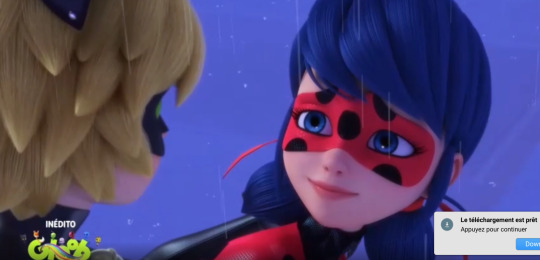
(ignore the pop up ad, I couldn't find a way to get rid of it)
Nathalie yes!!! Go off queen !!! I'm so excited to see what will happen next, how her knowledge will play into the rest of the Season, if she's going to quit, how it's going to work with Adrien...
Conclusion: Honestly loved this episode, a really strong opening to the Season!
#my connection isn't very good rn which is why i'm not really active but i'll be back soon#miraculous ladybug#miraculous analysis#miraculous spoilers#miraculous season 5 spoilers#evolution#evolution spoilers#monarch#ladybug#chat noir#alix kubdel#bunnyx
48 notes
·
View notes
Note
I am LOVING combing through all of your wizard au posts for never-seen-before lore. I've been reading the patented isabelguerra wizard au since 2020 and I have had just one (several) question all these years..... WHAT IS GOING ON WITH CODY AND LISA IN THIS AU!! What was up with Cody's boggart!! What was the traumatic event!! Why can Lisa see thestrals!! These two are so mysterious and enthralling and I've been thinking about their appearance in your boggart fic for sooooooo long. If any of this is spoiler free I would love to hear it.
Aw thank you!! god the 2020 era isabelguerra blog…. thanks for being here so long :’) Back then I just wasn’t letting the blog/au be something I could do for fun, hearing people actually LIKED them and came BACK is nuts (touching). its nice having something connecting you to a community. heres some answers for you:
Cody and Lisa in wizard au!!!!!!! So this AU was made before ch6, before Davy, and idk if the headcanon has died out now but people used to LOVE headcanoning cody+lisa as twins. That, plus my personal preference for their designs in ch1, meant that Wizard Au Cody and Lisa are twins and also Filipino. Different houses, same family.
And oh man Codys boggart. ok. You MIGHT be disappointed here, but. Codys boggart was a very subtle drawn-out jab at pnat’s then-recent canonization of the existence of vampires. I hated it. I was SO mad. So I did some digging on vampire lore and found apparently they can’t cross running water. So when Max overheard Stephen theorizing ‘oh jones has a water fear I bet hes some kinda vamp’, then getting yelled at by Lisa for jumping to extreme conclusions when REALLY he just had a very normal but bad experience as a kid, the underlying message there is me the writer going “vampires are the most nonsensical direction [canon] could be taking right now this makes no sense and in addition to hating it personally i’m going to make it explicitly clear that I will Never include it in my own story”.
Which is so silly. but you know if there’s one thing I love its literary symbolism. so whatever. That said, that was years ago and hey maybe i’ll change it! I’ve been working on rewriting boggart fic for republication and maybe i’ll mess around with it more. i’d love to hear your theories!!
As for Lisa seeing Thestrals, that part was initially added as an addendum to ‘Max wonders why nobody else can see Thestrals’, a bit i wrote to get an Angst Reaction before i realized A). it made no sense since isabels grandpa is literally dead B). i’ve evolved past shock value writing. so now it’s max, isabel, and lisa- max and isabel are obvious, but I really enjoyed Lisa’s pre-school store reveal characterization as ‘mysterious weird girl who just kind of knows creepy things somehow’ instead of ‘underground rebellion runner with tabs on literally everyone etc etc’. For this characterization purpose thestrals, as creatures only someone who has seen death can see, fit her really really well.
Essentially I liked her mystery and felt giving ‘Why Can Lisa See Thestrals’ an answer would be redundant in its purpose. Why can she see them? We just know she can. Maybe Cody knows, as her brother. Maybe Violet knows, as her best friend. But the story we follow as Max, Isabel, and Johnny has no reason to have that information. Much like the true nature of Cody’s boggart and the conversation they have following it, that’s a private moment we don’t have access to. Some things we aren’t meant to know. Some things don’t have an answer.
So that’s Lisa and Cody’s deal! I hope this was a fulfilling answer, I love getting asks about the au and I love writing it. Feel free to (as in please I’d love to hear them) send your other several questions! I love theorizing and I LOVE hearing theories others make about my work. Ty for the ask!!
5 notes
·
View notes
Text
The Prisoner: Some Perspectives

This post will spoil the conclusion I am going to reach in my series of posts on Number 6 as a 'plant' in the Village and also the identity of Number 1.
I am absolutely certain that Checkmate can be made to fit into the theory that Number 6 is a plant in the Village, but nonetheless that post is so far refusing to come together. Instead, since as always watching The Prisoner brings all sorts of different things to mind, this post will be a hotch-potch of thoughts about the series while I am writing that post.
- I think viewers, US citizens in particular, can tend to be drawn to the narrative of 'I am not a number, I am a free man' as the core script of the show. I think this is one of the aspects of show which is nearer the surface, and there are other dynamics going on under the surface. In fact far from being the core idea of the show, I think the idea of being a 'free man' is subordinate to ideas like corruption, the state, internationalism, cruelty, morals, and so on. If you assume, as I have for this series of posts, that Number 6 hasn't resigned and is investigating the Village, it helps to bring these different dynamics out. Of course the show itself ultimately destroys the narrative that Number 6 is being imprisoned by the Village with the revelation that he is himself Number 1. So the point of the show is that Number 6 thinks he is a free man, but isn't and is his own warder.
- If Number 6 is a plant, even if self-placed, then he isn't a prisoner in quite the same way as the others; and if investigating the functioning of the Village, then what he is comes far closer to the role of what we would now call a whistle-blower. At least, someone sufficiently concerned to find out some facts and in fact does try to blow the whistle to the suthorities in London in Many Happy Returns, as well as The Chimes of Big Ben.
- The show makes the omnipotence of the Village clear by the way Number 6 is betrayed by the men he turns to in London. However the omnipresence of the Village is also shown by the repeated appearance of that major symbol of the show, the chess board or patterns which look like it, in other places, including in Number 6's own former home in Many Happy Returns.
- It's interesting that the Village authorities don't understand what he is about as a man or in any way. The example that springs to mind is the exchange with Number 2 at the end of Dance of the Dead where Number 6 tells her that they will never win, and she replies 'How very uncomfortable for you, old man.' Attention on this exchange tends to be drawn to the likely violence that will be inflicted on Number 6 by the Village in an attempt to bring him in to line. However I think the real point of this exchange is that Number 2 simply doesn't understand that the violence she can inflict on him is nothing to the 'moral injury' that would be inflicted on him by complying. That is the real point. They can question him until they're blue in the face but won't understand the answers because the real point here is that he is a man of principle. I discovered the phrase 'moral injury' just this week and realised that it describes the consequences of conforming or failing to blow the whistle perfectly.
- Similarly turning the series round on its head and seeing Number 6 as a whistle blower changes the relationship he has with the other inmates of the Village. He tends to talk disparagingly of them as cabbages, but I think the shock for him would be to realise that these people's relationship to him is former colleagues. Dutton is of course a literal colleague, even though he doesn't know anyone else there. But they were all involved in the same line of work and are suffering the moral injury that Number 6 fears: they are complying with the abuses committed against them. The contrast between his continual defiance and their compliance is right at the forefront of the show, but they aren't the real point, it's the nature of the person who complies that's the point. Another shock for Number 6 is perhaps to find, as an independent, moral man, that so many of the secret agents of the world are so easily compromised and passive. Again, he is in the position of the whistle blower, finding out that suddenly nobody else has seen any of the abuses and he's alone.
- One of the most useful things which has come for me from viewing The Prisoner coming from different viewpoints each time (The Village as Markstein's home for restired agents in 2013, allegorically and seeing John Drake as Number 6 in 2014, apartheid in 2016, The Village as an asylum in 2022, episodes paired as films in 2023; all these series of posts are on my original blog linked at the bottom of the page) is that I now think that no single explanation of the show is possible. In fact this comes across clearly in the way McGoohan and Markstein diverged sharply on what was going on, and also the way McGoohan tended to contradict every single understanding in interviews. The show is therefore not intended to have a single explanation but to be open to many different ones. What I would say about this is that what I have found every time I have applied a different understanding to the show is that different explanations apply to different episodes and every possible understanding tends to go off the rails towards the end in the 'filler episodes'.
- I am aware that I tend not to think about the science fiction aspects of the show at all (for example the impossibility of reproducing Number 6's room in a building which it doesn't fit strikes me) and may at some point go through the show from a purely science fiction point of view and see what that does to it.
- Understanding is complicated by the way that in addition to showing the marks of the conflict between geniuses Markstein and McGoohan, it also has the scars of the requirement imposed on McGoohan to produce further episodes. I feel it's typical of him to create the perfect bit of television in his head and then find that the TV people wouldn't make it because it was only seven episodes! Of course this gives us the further opportunity to think about what it would have been like if made as he had intended, while also making it more difficult to understand, because we're going to have to face it that apart from having Alexis Kanner as eye candy in it, Living in Harmony could well be disposed of.
I will of course be returning to the idea of Number 6 as a Plant shortly.
This blog is mirrored at
culttvblog.tumblr.com/archive (from September 2023) and culttvblog.substack.com (from January 2023 and where you can subscribe by email)
Archives from 2013 to September 2023 may be found at culttvblog.blogspot.com and there is an index to the tags used on the Tumblr version at https://www.tumblr.com/culttvblog/729194158177370112/this-blog
0 notes
Text
Still more. How was there still more to climb?
Meiko was starting to wonder if that big dead sun up there even existed. Was it all just a trick, an illusion? Should they have attacked Meteion on the ship like Thancred? What if –
“You know,” A’kihiko let out a deep sigh as they stood before Meteion. “I think she’s underestimating how good a climber I am.” He looked up at his sister. “We can find a way up there, can’t we, Mei?”
She looked at him. So did Meteion.
“I mean, you’re tall enough. Can probably just launch me up, and I’ll throw a rope down or something.“
Meiko frowned at him. “You finally lost your bloody mind, Hiko?”
“I’m keeping up the hope through witty commentary, ‘tis the Mochikoko way.” He looked back at Meteion. “It’s hard, though, not to be overcome with rage. You know how much I hate birds.”
Meiko put her face in her hands and laughed. He had caught her starting to despair. Tears pricked the corners of her eyes, but that was all. Meteion continued to stare on, blank-faced.
“Your friends’ lives are vanishing with each passing second and your world is at its end. Yet you laugh?” she inquired.
“Aye. S’an average Windsday in Eorzea,” A’kihiko folded his arms. “Are you really surprised? You’ve said it yourself – to live is to suffer and all that. We suffer every day. It hurts, but we carry on. Or have you not been listening to everything our friends have said?”
“And the struggle is what makes triumph so great.” Meiko looked up, exhaling slowly. “But you can’t comprehend that. All this doom and gloom shite – so what if it ends? So what if it ends badly? The end of it all doesn’t make the good parts not good. Happy memories, jokes in the face of,” she waved a hand at their surroundings, “whatever the fuck this all is, it helps you carry on despite it all.”
“People are always going to seek better. It’s in our nature to want more. But not everyone wants to be gods,” A’kihiko shook his head. “And there are plenty satisfied with how their lives end, even if it’s sad. All you and your sisters did was generalize and jump to conclusions. You saw only the end, but never a beginning. Your data wasn’t complete.”
There was a silence. Then Meteion tilted her head. “Are you done?” Her lips curled into a small smile. “If you sought to bring about a revelation, I am afraid to inform you that you have failed. Neither of you can prove that the data we gathered was insufficient. Neither of you can even comprehend what we have learned, understood, or felt. And you are no closer to our nest than you were at the start of this conversation.”
“…Right.” A’kihiko turned to Mei. “We using the stone, then?”
“Thought you wanted to climb.” Meiko was already retrieving it from her belt.
“I just trimmed my nails, unfortunately.” He reached and took her free hand, giving it a squeeze. “Think of it this way. If we do end the universe, no one’ll be ‘round to scold us for it.”
“Except Y’shtola, likely for eternity.”
“I’ll take that over suicide feathers.”
Meiko squeezed his hand back and looked at the stone of Azem in her palm. She could take a bit of solace in the fact that neither her brother nor her really knew what they were doing. The burden of thousands of worlds containing infinite souls weighed heavy, and yet here they stood: two scrappy orphans from a fishing town too small to earn its place on a map.
She didn’t want to end the universe. She didn’t want her friends’ efforts to be for naught. She didn’t want to return to Eorzea triumphant, only to find that the lands had already been ravaged beyond repair. They had to make a decision now, now, now and yet she didn’t like their options.
Her fingers curled around the stone.
“There has to be another way,” she said quietly, and leveled her gaze with Meteion’s. “This place is ruled by emotions, aye? Well I’ve got a fuck ton of ‘em – and you’re gonna have to deal with every single bloody one!”
“–Mei, the stone’s glowing.”
“What?” It was. And now the ground was glowing with the same symbols as they had before.
A’kihiko’s ears lowered. “Did you summon them anyway by yourself?”
“No! I mean, I don’t think I –”
“Do you think Azem had these sort of conversations in his own head?”
"If he did, it would explain quite a lot about his irritating behavior.”
0 notes
Text
Men (2022)
- Lol the prime minister from the first Black Mirror episode :|
- The part where Harper was walking in the woods and then encountered that naked man was scary. After that it wasn’t really scary to me, just pretty fucked up at times. (I often have this kind of reaction to horror movies - the setup scares the crap out of me but then when it gets going I’m not scared anymore. An extreme example was His House, where I actually had to skip parts of the first 30 minutes or so because it scared me so much ... xD The movie that came the closest to scaring me throughout was maybe Hereditary?)
- Kind of weird that Harper didn’t seem to acknowledge or even notice that all the men in the village looked very similar O_o
- So frustrating that she didn’t just keep driving to save herself after hitting the landlord guy with her car .... typical horror movie trope I guess :/
- Hairless vulvae on the dudes :|
- I started laughing when the dudes just kept birthing new dudes and Harper kind of looked just like ‘ugh, it’s just never ending’. But when her dead husband appeared, and I finally realised the connection with their injuries and that, I thought the symbolism was actually really touching and well done.
- I guess dudebros online hate it just for the title and what they think it implies idk
- “Interesting” when a man makes several movies about a woman who did something that really hurt a man who loved her, but tells the story from the woman’s perspective :| (Annihilation has a similar theme)
Here of course arguably Harper didn’t actually do anything wrong, but her husband couldn’t accept that their relationship wasn’t working anymore and took it out on her. But she naturally struggles with her conscience in face of his death/suicide(?) and whether she could have done something differently.
- Why is the dead husband of all people in the movie a Black man, while all other characters are white ... :|
(To me personally it made me sympathise with him more than if he’d been cast as a white actor, and I even cried a bit at the end when Harper came to her conclusion of what he (had) wanted. But given the story I didn’t necessarily like sympathising with him ...)
- Eh it was okay, not my fave movie
1 note
·
View note
Text
Logyn Meta: Loki & Sigyn’s Relationship in Mythology
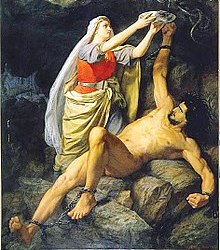
It’s a classic tale, and arguably one of the most famous in mythology: How Sigyn held a bowl above her lover’s head to shield Loki from the snake’s venom, in turn, holding back Ragnarok a little longer.
But how did Loki and Sigyn come to be married? How did they meet? How did they fall in love?
With so many questions, but few answers we are left with in what has survived with the stories today, we are often left to ponder how the story of Loki and Sigyn came to be. As have many others before me, I will be exploring my thoughts with what information we are given to ponder as to how these two lovers became a thing.
To answer this question, we must go back to the beginning where Sigyn was first introduced to us in the mythologies, presenting the ONLY information we know about their relationship -- specifically: The Poetic Edda & Prose Edda.
In the poem, Lokasenna, the most famous of poem’s with the couple, it talks of how Loki has been bound by the gods with the guts of his son, Nari, and how his son, Vari, has been turned into a wolf. The Goddess Skadi fastens a venomous snake over Loki’s face, from which venom drips. Sigyn, stated as Loki’s wife, stays by his side and holds a basin under and catches the venom so it won’t drip onto her husband, but when the basin grows full, she pulls it away to empty it, during which time venom drops onto Loki, causing him to wither so violently that earthquakes occur that shake the entire earth.
In the poem, Gylfaginning, Sigyn is introduced in Chapter 31 as being married to Loki and that they have a son by the name of “Narfi or Nari”. She is then mentioned again in Chapter 50 where events are described differently than in Lokasenna; Vali, described as a son of Loki only, is changed into a wolf by the gods and rips apart his brother, “Narfi or Nari.” The guts of Nari are then used to tie Loki to three stones, after which the guts turn to iron, and Skadi places a snake above Loki. Sigyn of course catches the venom in a bowl. This process is repeated until he breaks free, setting Ragnarok into motion.
In the poem, Skáldskaparmál, Sigyn is introduced as a goddess, an Æsir, where the gods are holding a feast for their visitors and in kennings for Loki: “husband of Sigyn” and “cargo [Loki] of incantation-fetter’s [Sigyn’s] arms.”
Now, knowing the little knowledge we have on their relationship, it’s time to explore it from the Viking’s point of view, which is where this all pretty much originated from, in order to understand it better.
Viking Way of Love and Life
I’m no expert in this category, in fact, I’m still learning about it as I go, but there are some important key things to note here about the Viking’s POV on things and how it ties into Loki & Sigyn’s relationship.
Divorce was completely acceptable in Viking Times. In fact, women could own property, request a divorce and reclaim dowries if a marriage ended. She could divorce him for a good number of reasons actually.
Women often remained faithful to their husbands, although they were known to have extramarital sex. If they were caught cheating by the husbands, it usually ended pretty badly for the women.
A Man couldn’t marry his concubine, so his wife wouldn’t have to feel threatened about competition. They usually all lived in the same household. Adultery concerning the husband was okay, but not the wife.
Vikings didn’t categorize people as homosexual, bisexual, straight or etc.They differentiated between submissive and dominant roles in sexual relationships. Homosexuality was acceptable with limits.
Poetry was a big part of Courtship.
Typically marriage was usually for alliances, set up by families and parents. However, this doesn’t mean there wasn’t romance or love between couples or potential marriages.
Family life was important to Norse Men and people usually aimed to survive: typically by marrying and having children.
How does this apply to Loki and Sigyn? Now, let’s dive into the typical hypothesis of their relationship. I call it a typical hypothesis because it hasn’t really been outright pointed out in the mythologies, but it’s something the Mythology community usually agrees on concerning Loki and Sigyn’s relationship from what we know here.
A Hypothesis into Loki & Sigyn’s Marriage
The marriage between the two of them alone is usually questioned by others, especially concerning Loki’s chaotic nature and Sigyn’s undying loyalty. Obviously, she could have divorced him whenever she wanted to if things were bad, but instead she remains by his side which leads us to the fact, not only does she truly love Loki, but she also knows more to him than we do -- as if there is a secret hidden side to the god of Mischief.
It is sometimes implied that the marriage between Loki and Sigyn was an arranged one to establish position in Asgard -- as marriages typically were in Viking Times. This doesn’t mean there wasn’t love between them, In fact, it could have been a perfectly arranged marriage.
Sigyn isn’t blind to Loki’s flaws, knowing perfectly well how her lover is and accepting him flaws and all -- unlike the other gods. It’s more than likely she knows about his other children: Jormungandr, Sleipnir, Hel and Fenrir, just as she probably knows about his affair with Angrboda. Again, this wasn’t an uncommon thing in Viking Times for a man to have another lover and other children with them.
Loki is very much a family person, just as he enjoys having fun. There has never been anything alluding to him abandoning his family or abusing Sigyn and his kids despite what pop culture or other versions may say. Instead, they have been taken away from him by others in someway (ex: Vali having to kill Narvi as the gods use his insides as Loki’s bindings. Odin taking away all of Loki’s children, making Hel the ruler of the underworld, Jory the serpent of Midgard’s sea and Fenrir locked in bonds. Lets also not forget Sleipnir becoming Odin’s horse and most of his children dying during Ragnarok because of said gods. Sigyn’s whereabouts are unknown and Angrboda is dead. Case in point: I’d wanna start Ragnarok too.)
Vikings typically used motifs or symbolism with their writings. This is where the “opposites attract/compliment each other aka Balance of nature’ comes into play. While Loki is outright known as a Trickster God, hence the God of Mischief (which is typically harmless pranks or fun), but it usually ends with bad results for him, turning into Chaos. And what’s the opposite of Chaos? Constancy and Order. Although it isn’t outright stated, she is pointed out as Loki’s loyal wife and seems to offer that Constancy to his Chaos. Hence, some of us refer to them as “Different Sides of the Same Coin.”
Conclusion
Loki and Sigyn’s relationship is typically misunderstood by others nowadays thanks to how little information we have on them in the texts, some peoples own interpretations of their relationship (*coughs* MARVEL COMICS *coughs*) and how much Sigyn still remains to be unknown by others.
I believe that if their relationship was to be portrayed in the proper way, taking everything here into note and not given to writers who don’t understand or refuse to take the time to understand their relationships/characters, they might actually be understood better overall. A good example of this I’ve found myself is from the German Movie: Mara and the Firebringer and Neil Gaiman’s book: Norse Mythology. They both explore Loki and Sigyn’s relationship in a proper light, not undermining either of them and exploring their thought process and actions in ways that only strength their relationship and one another as individual characters bonded together in marriage.
Bonus mention to The Bifrost Incident by The Mechanisms for their interpretation of Loki and Sigyn’s relationship as well.
_____________________________________________________________
SOURCES:
Viking Love: 8 Facts about Love and Love making from the Vikings - https://historycollection.com/eight-facts-love-marriage-viking-style/
The Love Life of the Vikings - https://historyofyesterday.com/love-life-of-vikings-f21c9ed58d4e
Norse Mythology Character Tropes - https://tvtropes.org/pmwiki/pmwiki.php/Characters/NorseMythology
Mara and the Firebringer TV Tropes (SPOILERS BEWARE) - https://tvtropes.org/pmwiki/pmwiki.php/Film/MaraAndTheFirebringer
Neil Gaiman’s Norse Mythology (Book) - https://en.wikipedia.org/wiki/Norse_Mythology_(book)
The respective Edda’s are linked above by their names.
#logyn#norse mythology#sigyn#loki#Constancy & Chaos (Logyn)#loki x sigyn#loki and sigyn#logyn meta#the bifrost incident#mara and the firebringer
196 notes
·
View notes
Text
Genshin gods and their connection to demonology and mythology
I’m no expert on demonology nor mythology, simply someone that enjoys both and the connection between them and Genshin Impact. I think that Mihoyo did a splendid job on the choices they made when deciding which demons in The Lesser Key of Solomon to use. Anyways, I hope that you enjoy.
Barbatos

Barbatos in demonology is one of the earls of hell, ruling thirty legions of demons and has four kings as his companions to command his legions. His name seems to derive from Latin 'barbatus', bearded, old man, philosopher. He is the 8th demon in The Lesser Key of Solomon, while Pseudomonarchia Daemonum listed him as the 6th demon.
So far it does not really have anything to do with Genshin, except maybe the fact that Barbatos refers to Morax as old man when his name means old man, so that’s a little ironic.
Barbatos is very known for his command over archery, which is why Barbatos in Genshin uses a bow.
Alright, here is the fun part, Barbatos, unlike some of the other demons in The Lesser Key of Solomon, doesn’t have anything to do with foreign gods. Foreign gods in this case refers to gods not belonging to the Abrahamic religions.
In fact, Barbatos is a fallen angel and was once of the order of the virtues of heaven. This is a delicious piece of irony, given that Barbatos’ godly form greatly resembles an angel.
Barbatos takes upon the name ‘Venti’ as a mortal. The name Venti is most likely Latin instead of Italian. Venti in Latin means wind, and can either refer to the entirety of the four wind gods that serve Aiolos, the Roman Lord of the Winds, whose Greek counterpart is Aeolus or a specific type of wind spirit in Roman mythology, whose Greek counterpart is known as Anemoi Thuellai. The wind spirits are violent storm winds, sons of the monstrous hurricane-giant Typhoeus and were kept locked up in Aiolos’ floating fortress.
The four wind gods that served Aiolos are Aquilo, the north wind, Favonius, the west wind, Notus, the south wind, and Vulturnus, the east wind. Their greek counterparts are Boreas, Zephyrus, Notus and Eurus respectively. I brought this up because of the Knights of Favonius.
Another of the four winds gods appear in Genshin, although this time with a Greek name. Andrius, the Wolf of the North, is also known as Lupus Boreas. Lupus is the Latin term for wolf while Boreas, as stated above, is the Greek god of the north wind. In conclusion, the name Lupus Boreas itself more or less means Wolf of the North.
Morax

Morax in demonology is one of the presidents of hell, ruling thirty legions of demons. His name seems to come from Latin 'morax', that delays, that stops. He is the 21st demon in The Lesser Key of Solomon.
So far, similarly to Barbatos, the only thing that has anything to do with Genshin is his name, mostly because rock is the most likely to be able to endure time.
Morax appears as a great bull with the face of a man, which is interesting in a Chinese context, as Liyue is based on Ancient China. In the Chinese zodiac, an ox has a fixed element, which is earth. The Chinese zodiac sign Ox is disciplined and orderly in his or her thoughts and actions. They are known for the strength of body, mind, and character, and tend to be very conservative. They do well in business, not because of ingenious inventions or clever self-promotion, but by hard work and long hours. Sometimes considered old-fashioned, Chinese Oxen are well-known for their moral fiber. They live by a code that may no longer be popular, but they have a clear sense of what is right and wrong. While others may see them as slow and plodding, inside, they are romantics who want to look at the world as it once was (or at least how they know it was).
This makes the ox a very fitting animal for the Morax we know in Genshin.
Furthermore, another belief for his name is the Egyptian goddess Maat, the goddess of truth, balance, order, harmony, law, morality, and justice. This makes it fitting for the Morax in Genshin in my opinion.
Alright, back to demonology, Morax teaches Astronomy and all other liberal sciences, and gives good and wise familiars that know the virtues of all herbs and precious stones. The precious stones part is fitting for the Morax in Genshin but also the fact that Morax in demonology likes to teach, just like the Morax in Genshin.
Morax descends upon Liyue as a dragon. Dragons in East Asian mythology is commonly associated with good luck, propitiousness, power, and nobleness. In ancient times, only emperors were allowed to use a dragon as a symbol. This is probably used to further reaffirm Morax’s position as the highest of the adepti. The colours used in Morax’s dragon form are simple, brown for the earth and gold for the gold that flows in his veins. Even if he did not create Mora, it is typically said that immortals bleed gold, which is commonly known as ichor.
“The Dragon is believed by the Chinese to present power and valiancy, excellence and determination, dignity and divinity. A dragon is believed to have the powers to overcome obstacles to see success. He is spirited, confident, enthusiastic, intelligent and determined.”
As a mortal, Morax takes the name ‘Zhongli’. Chinese names are a bit more difficult to decipher, compared to Latin names since they depend more of the characters used to make up the name as compared to just the sound of the name. Different characters in Chinese could make the exact same sound but mean very different things. Zhongli’s name in Chinese characters is 钟离, the Zhong in his name means clock while the Li in his name means leave. A interpretation of his name would be off the clock, symbolising his retirement.
His name is likely from a figure in Chinese mythology, 锺离权, Zhongli Quan, one of the Baxian, the Eight Immortals of Daoism. Zhongli Quan is also sometimes known as , 汉锺离, Han Zhongli because he is said to have lived during the Han dynasty. In legend, he wields a large fan which can resurrect the dead and transform stones into silver or gold. The Zhong in his name is actually the same Zhong used in Genshin’s Zhong but in traditional Chinese as opposed to the simplified Chinese used in Genshin.
Baal

Baal in demonology is a Duke of Hell, with 66 legions of demons under his command. His name comes from a Canaan and Mesopotamian god, specifically the god of fertility and storms. The Semitic word Baal means lord or master, and the ancient people believed he was in charge of all of nature and humans. He is the 1st demon in The Lesser Key of Solomon.
Baal in Genshin forms herself as a ruler or lord and master of Inazuma. Unlike Barbatos, who is mostly absent or Morax, who descends once a year, Baal seems to be a god that rules with an iron fist, appropriate for someone whose name means lord or master.
Baal in Genshin claims that her ideal is "nearest unto Heaven," calls her body the "noblest and most eminent of all in this world," and sees her reign as eternal which is again, fitting for someone whose name means lord and master.
Baal in demonology is also commonly associated with Satan or at least as his primary assistant. The arrogance shown in Baal in Genshin is therefore fitting, given that Satan was once Lucifer, the most perfect of angels before he rebelled against God and fell to heaven. He too believed that his ideal was the nearest unto Heaven and that his body is the noblest and most eminent of all in this world. Another interesting factor is that Baal in Genshin believes that humans are not deserving of visions, similar to Satan’s reason for his rebellion against God, for he believed that humans did not deserve God’s love or protection.
Baal as a god was believed to be the "giver of life" and mankind was dependent upon him for providing what was necessary to sustain the farms, flocks and herds. Baal was the god of fertility and storms, it is fitting as storms meant lighting and therefore electricity. In Ugaritic and Hebrew, Baal’s epithet as the storm god was He Who Rides on the Clouds.
The question on how a powerful ruling god, similar to Zeus in Greek mythology, became known as a demon is fairly simple.
“According to the Old Testament, after the Israelites wandered in the desert for 40 years, they arrived in the fruitful land of Canaan where the prime deity was Baal. Before they entered the Promised Land, the Hebrew people were warned not to worship the pagan gods of Canaan. However, after wandering in the desert for all that time, they weren’t quite sure that their god was the right choice since the Canaanites were living it up on the fertile soil. Many split their allegiance and decided to worship both their god and Baal.”
Many pagan gods were demonised by the Abrahamic religions as the Abrahamic religions did not allow worship of gods that weren't their God. They called it idolatry and deemed it a sin.
Baal’s primary prophet was Jezebel, if you are not familiar with the Abrahamic religions, she is symbolically associated with false prophets. The original Jezebel instituted the worship of Baal and Asherah on a national scale and violently purged the prophets of Yahweh from Israel. Through the centuries, the name Jezebel came to be associated with false prophets. By the early 20th century, it was also associated with fallen or abandoned women. In Christian lore, a comparison to Jezebel suggested that a person was a pagan or an apostate masquerading as a servant of God. By manipulation and seduction, she misled the saints of God into sins of idolatry and sexual immorality. In particular, Christians associated Jezebel with promiscuity. The cosmetics which Jezebel applied before her death also led some Christians to associate makeup with vice.
Personally, given that the records of Jezebel are mostly from Abrahamic religions, I would advise that it be taken with a spoonful of salt. I mentioned Jezebel because she was said to have violently purged the prophets of Yahweh from Israel, similar to how Baal in Genshin purged the vision holders in Inazuma.
#genshin impact#genshin#genshin zhongli#zhongli#genshin morax#genshin venti#genshin barbatos#morax#genshin impact morax#morax genshin impact#morax genshin#venti#barbatos#zhongli genshin impact#zhongli genshin#genshin impact zhongli#genshin impact venti#genshin impact barbatos#venti genshin impact#venti genshin#barbatos genshin impact#barbatos genshin#genshin impact baal#genshin baal#baal#baal genshin impact#baal genshin
158 notes
·
View notes